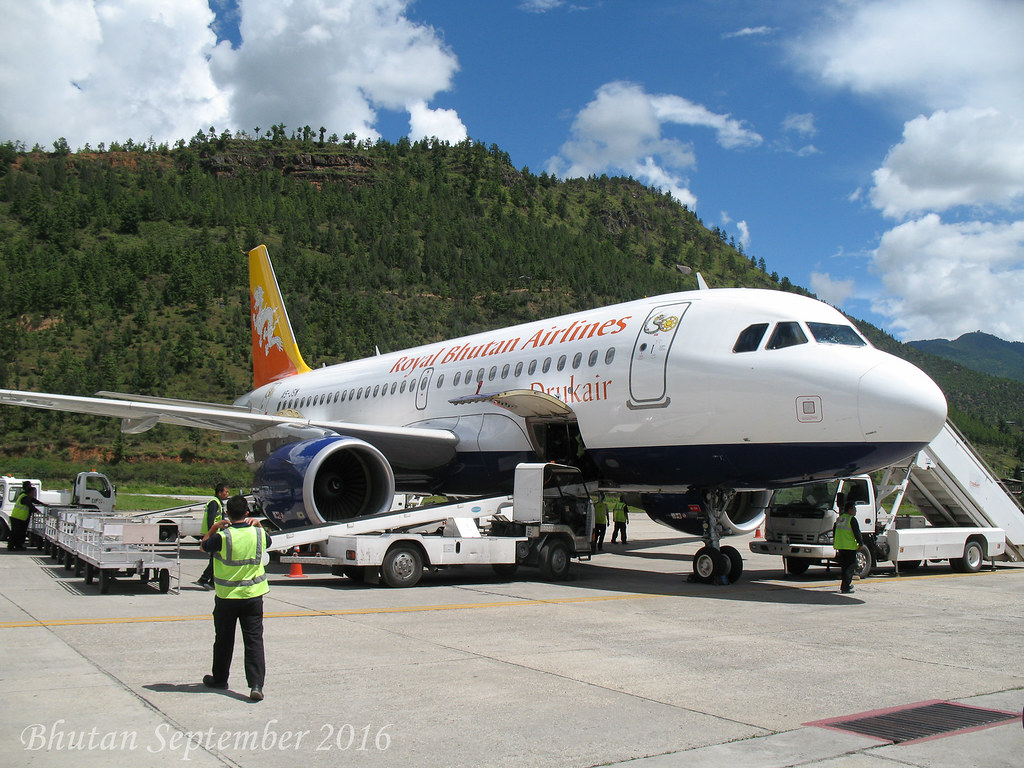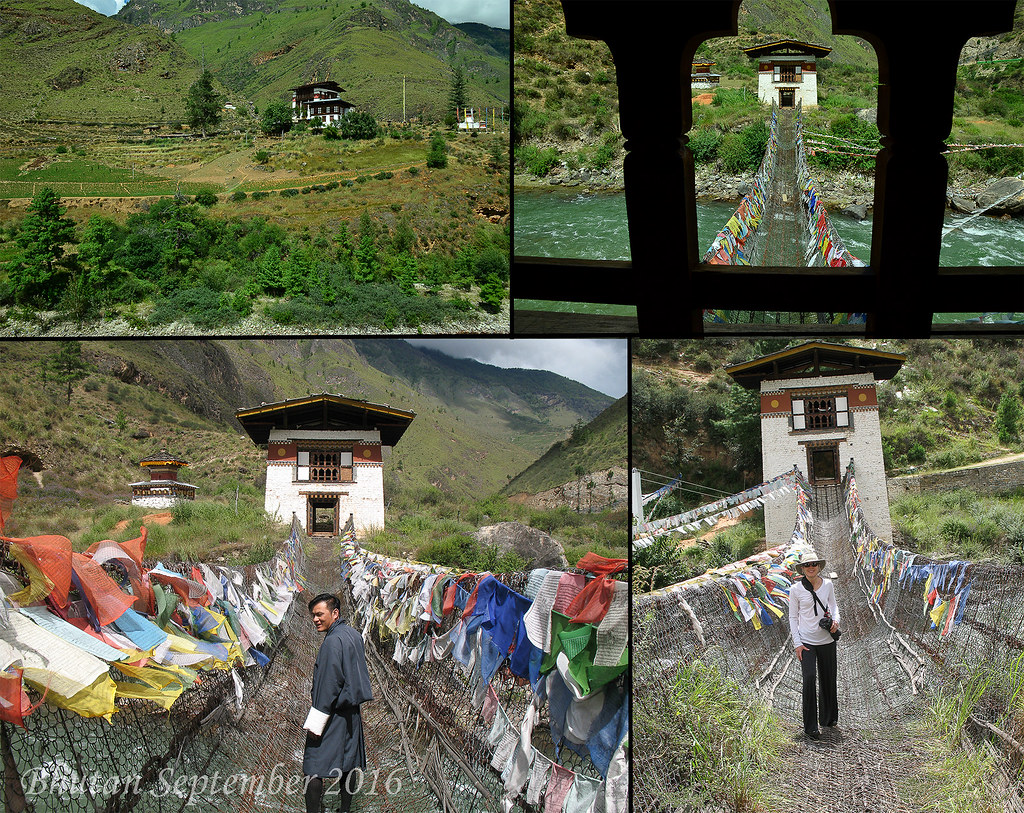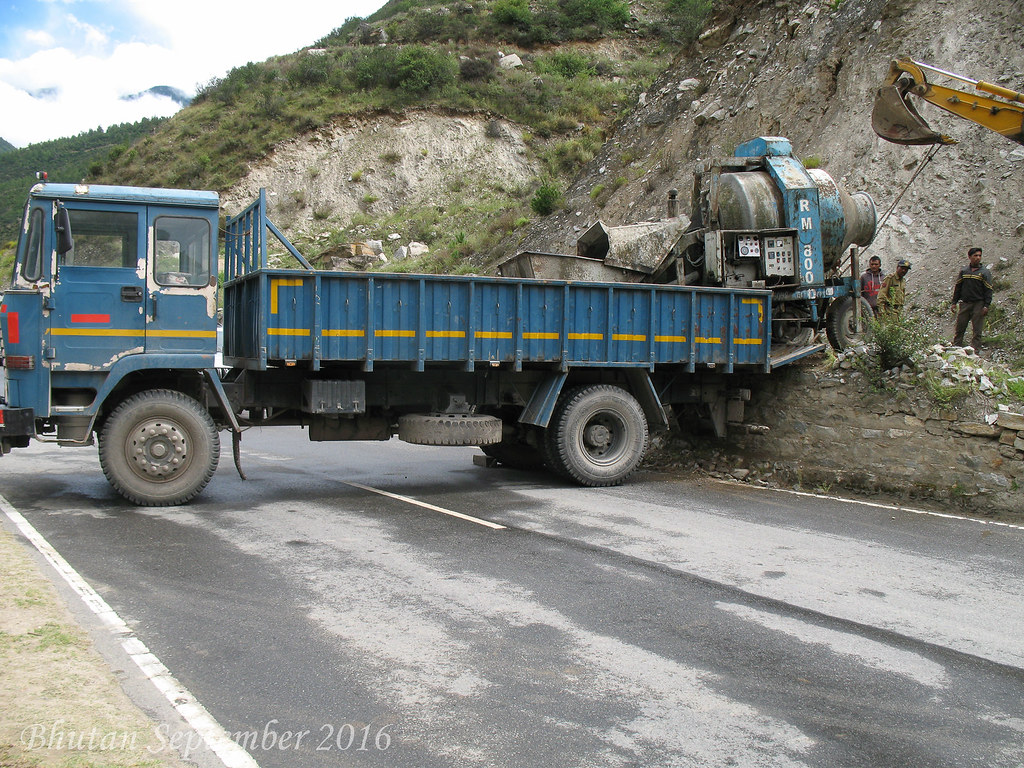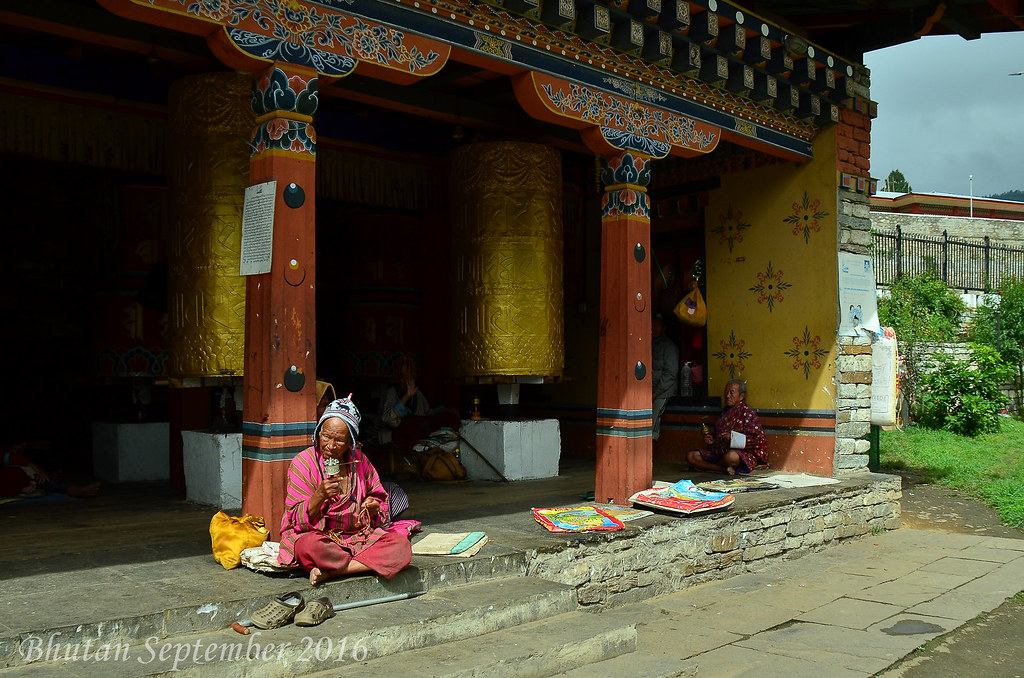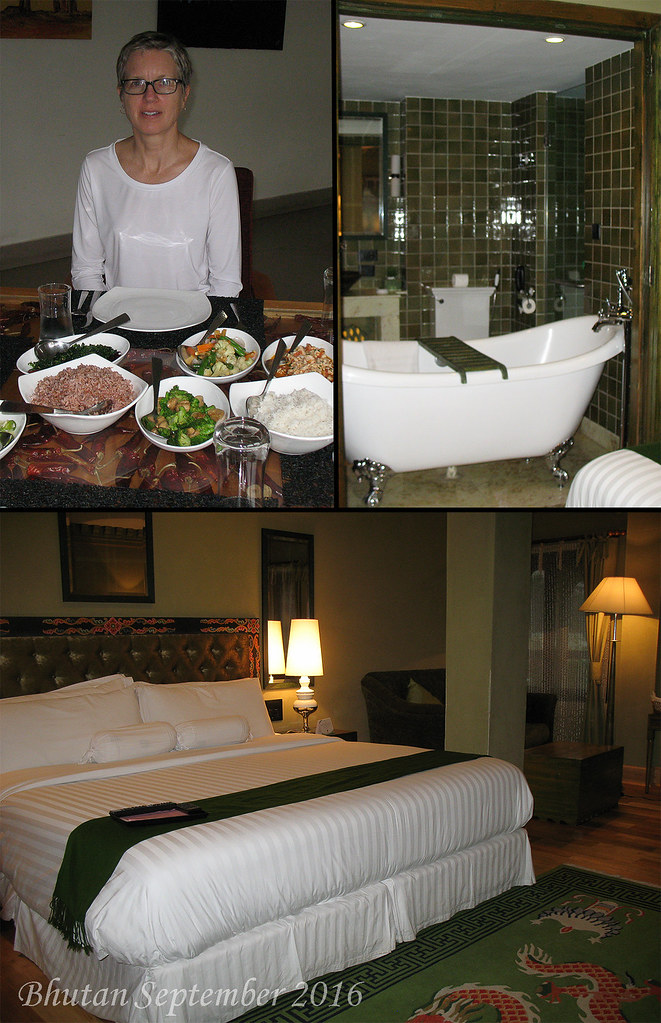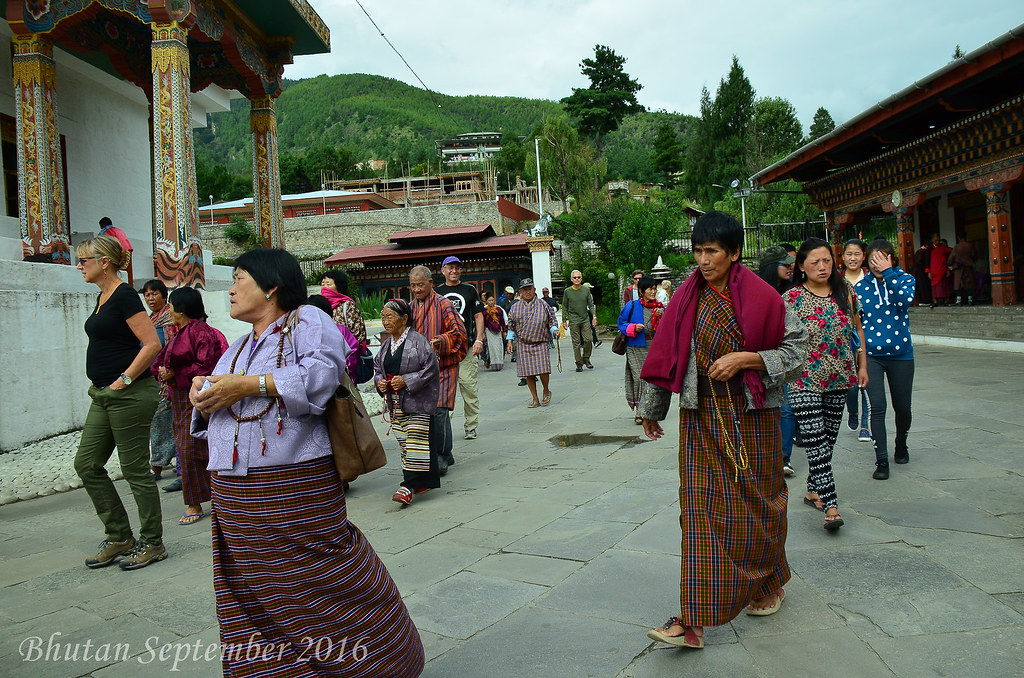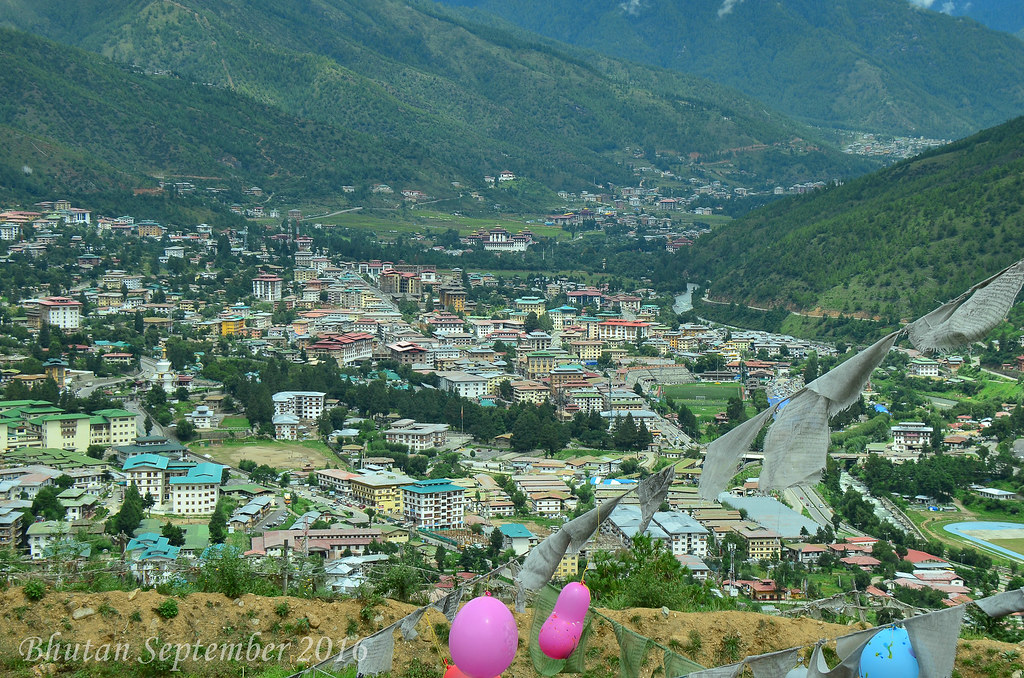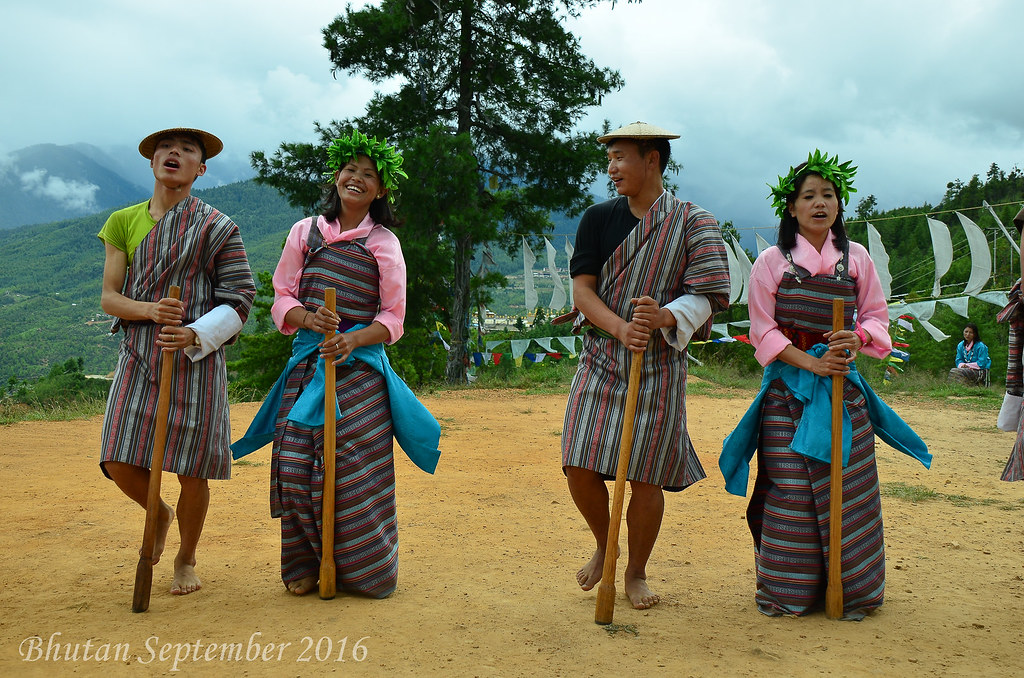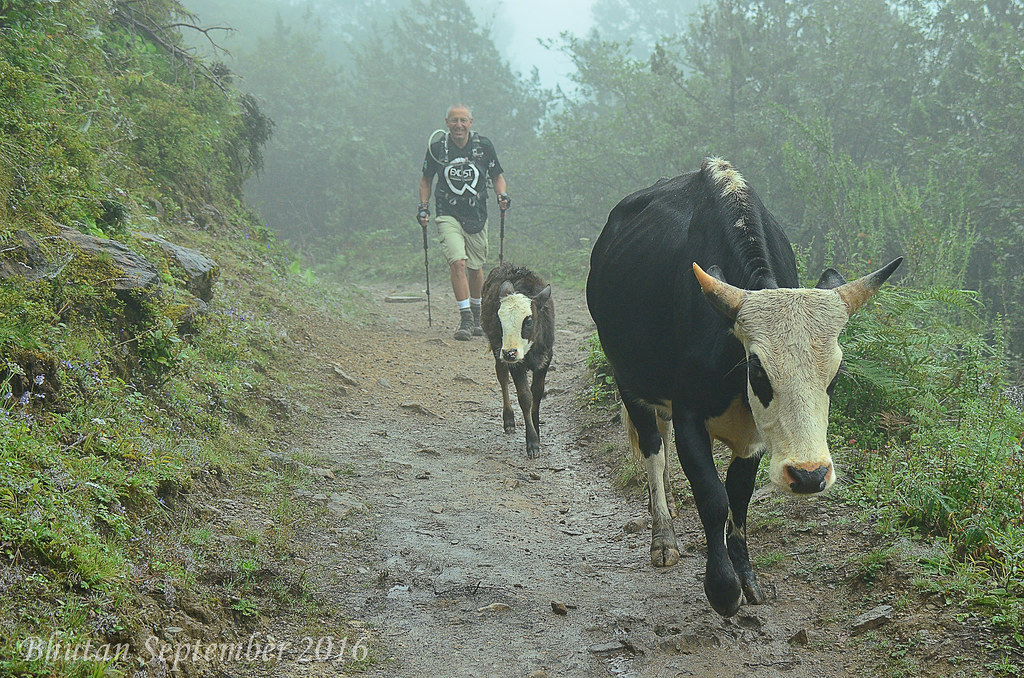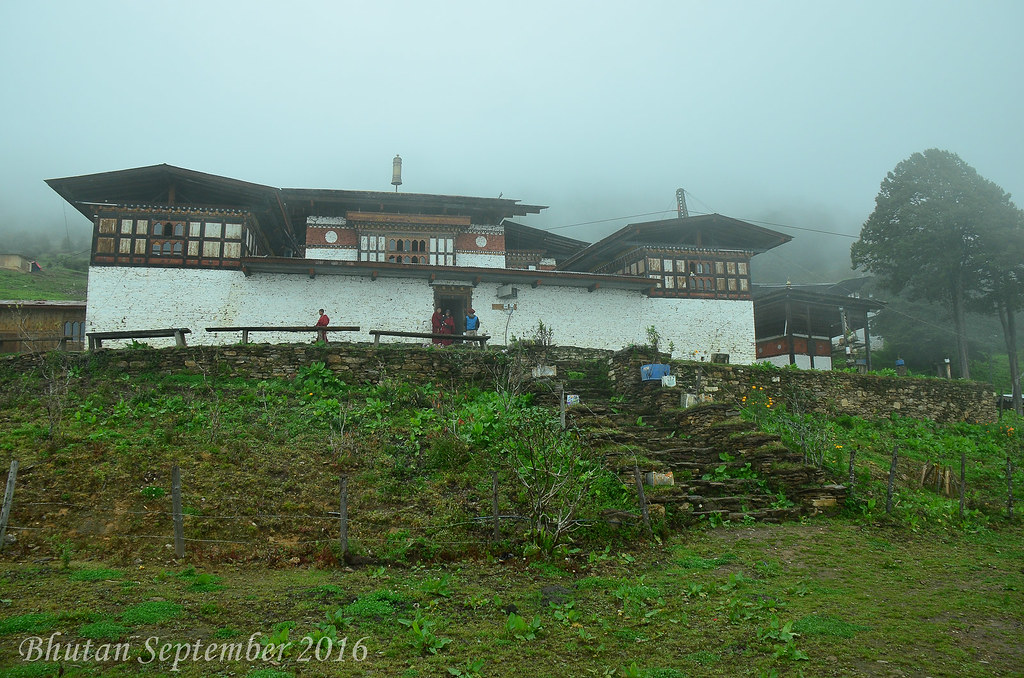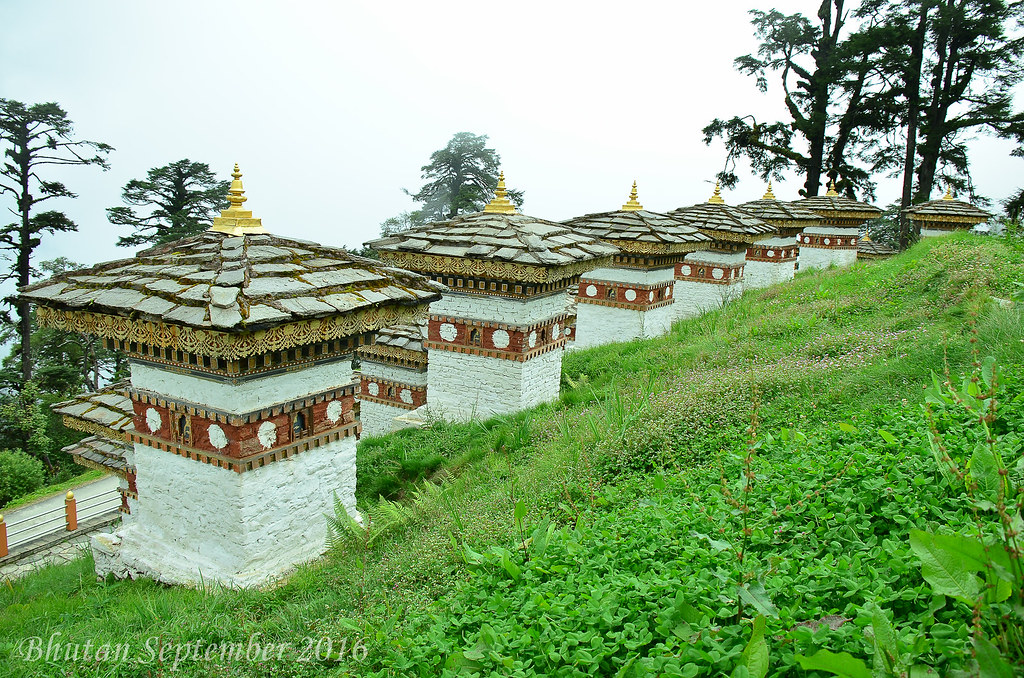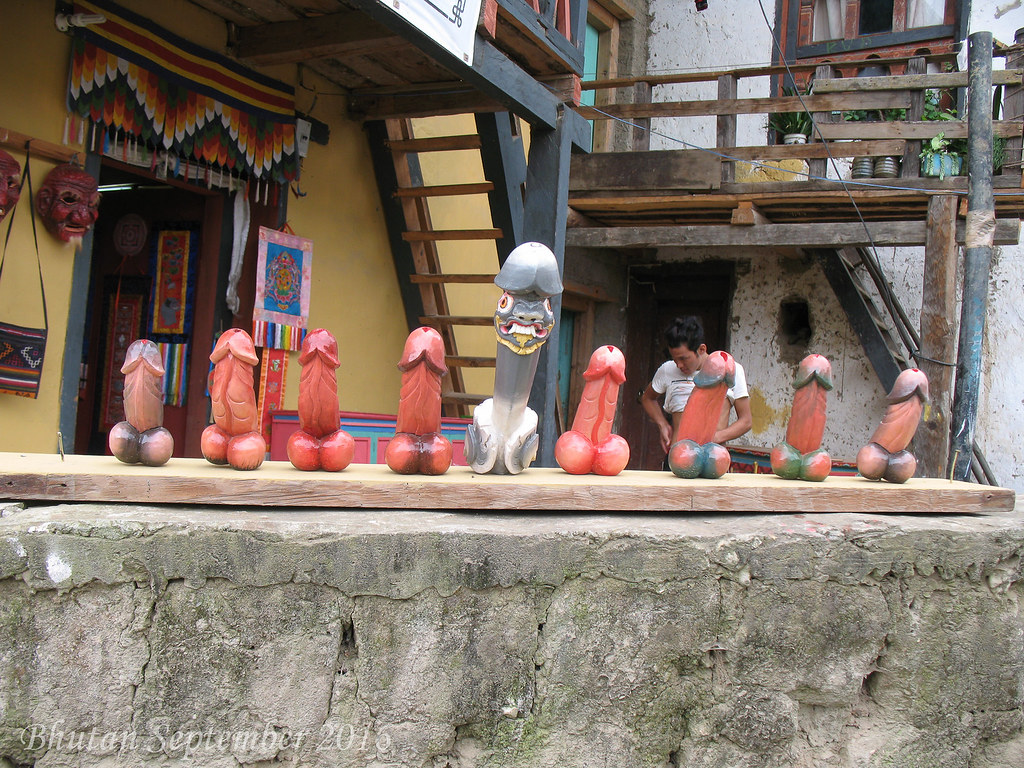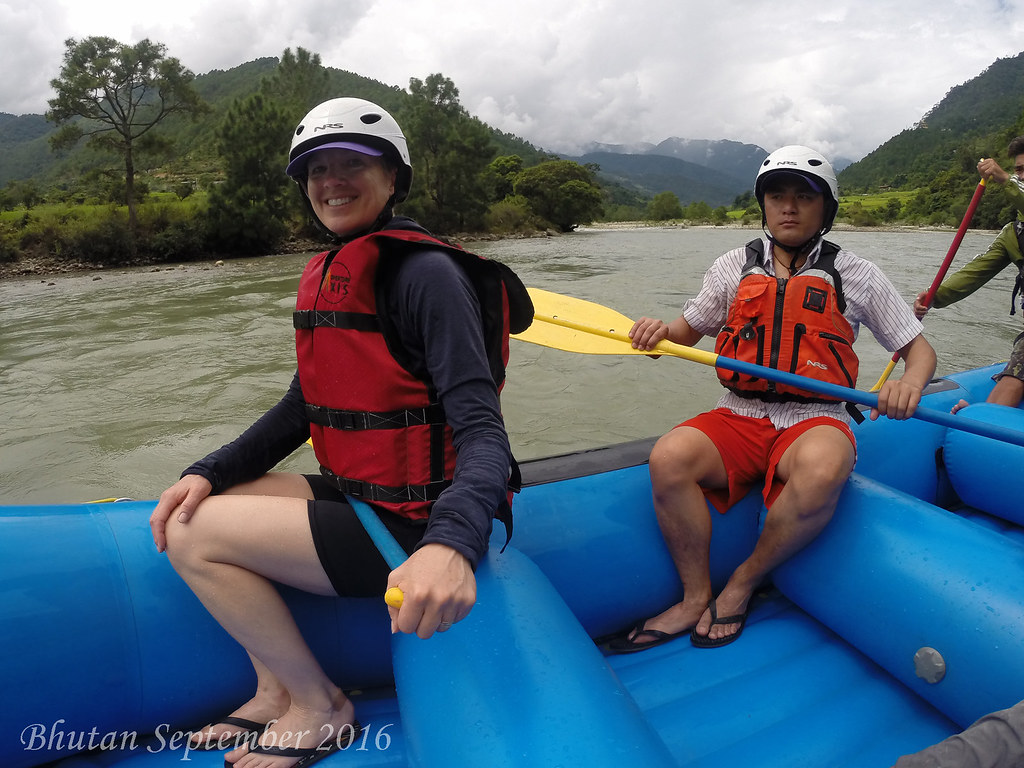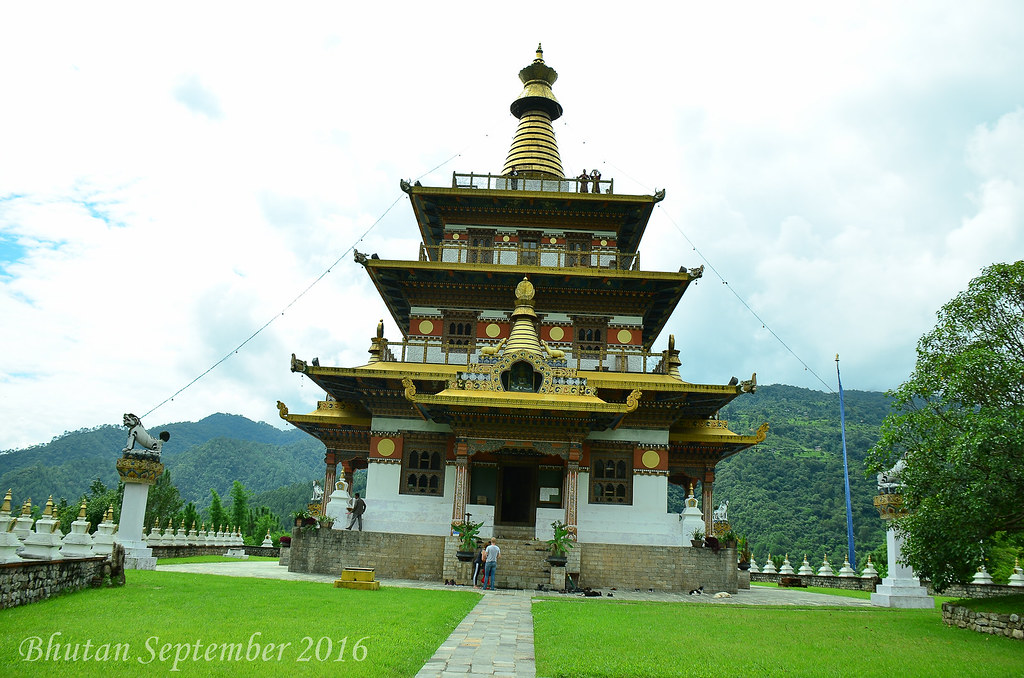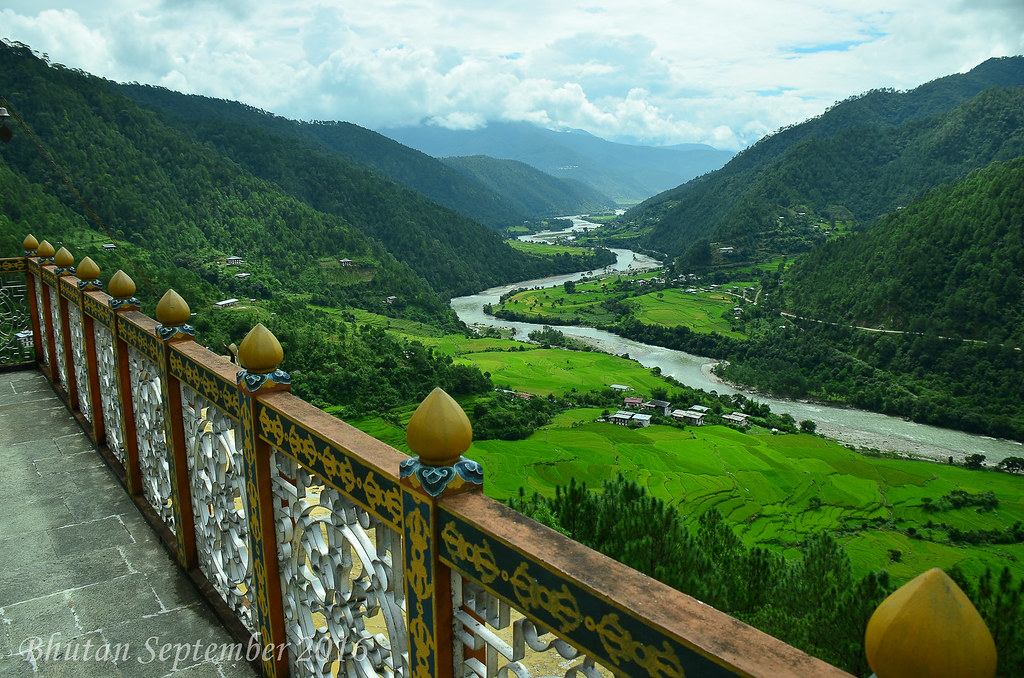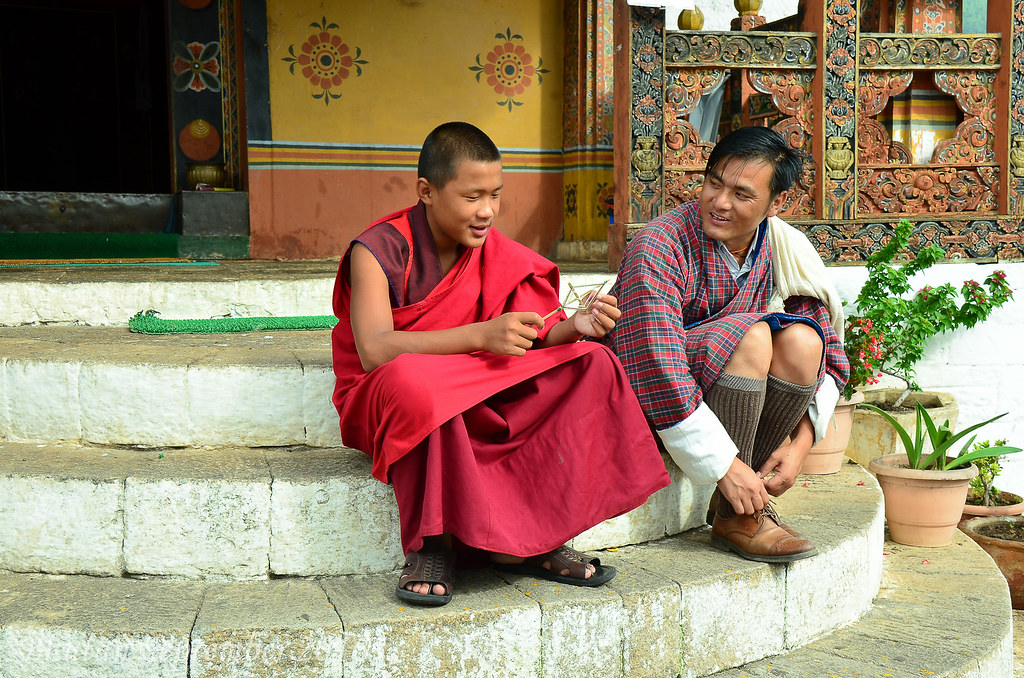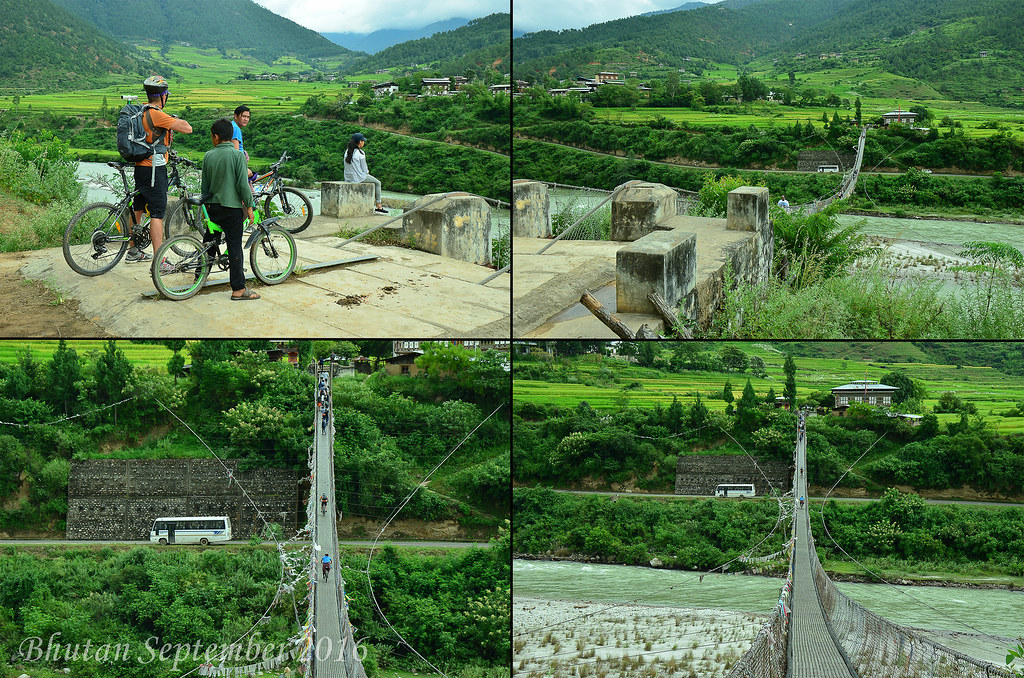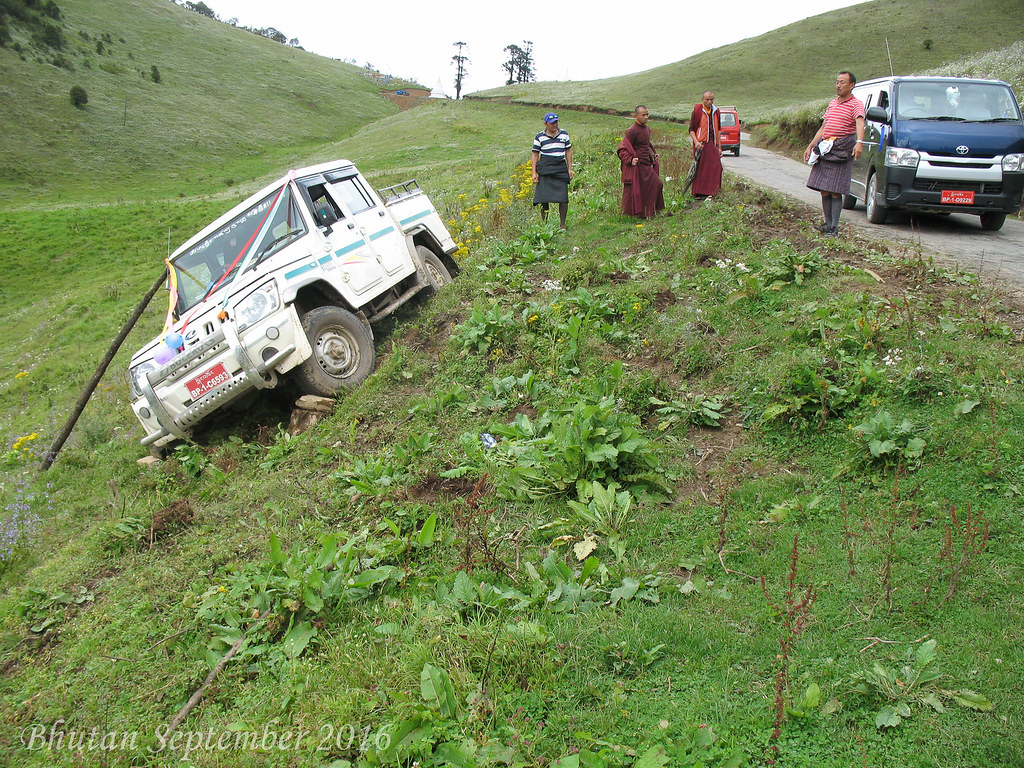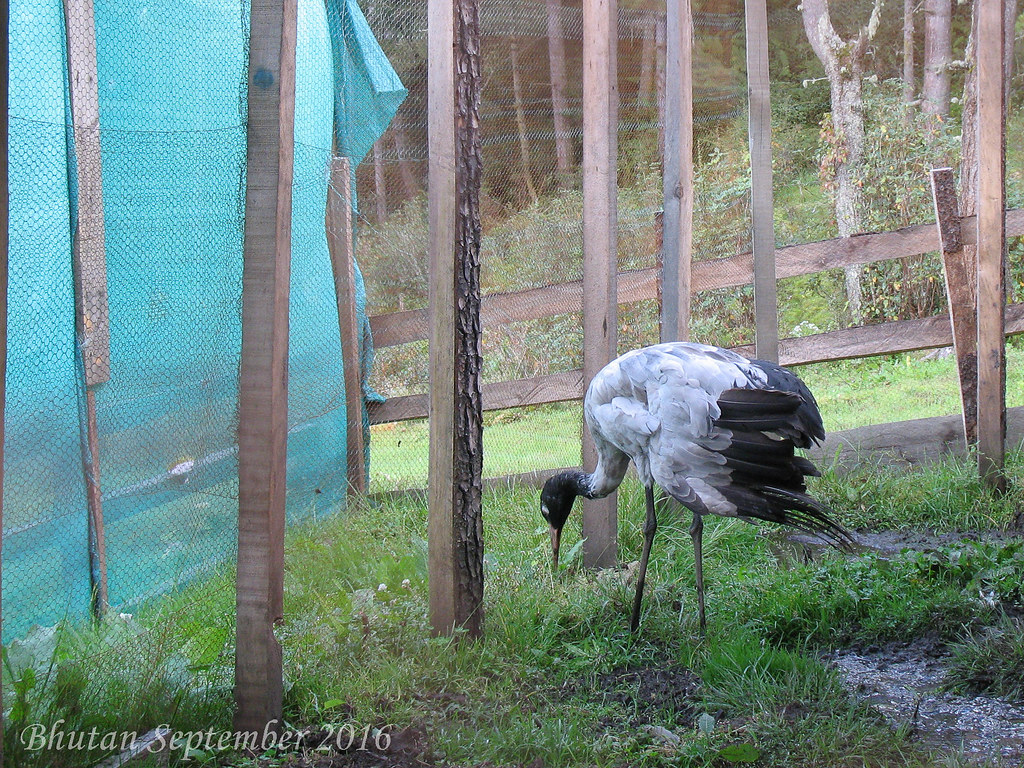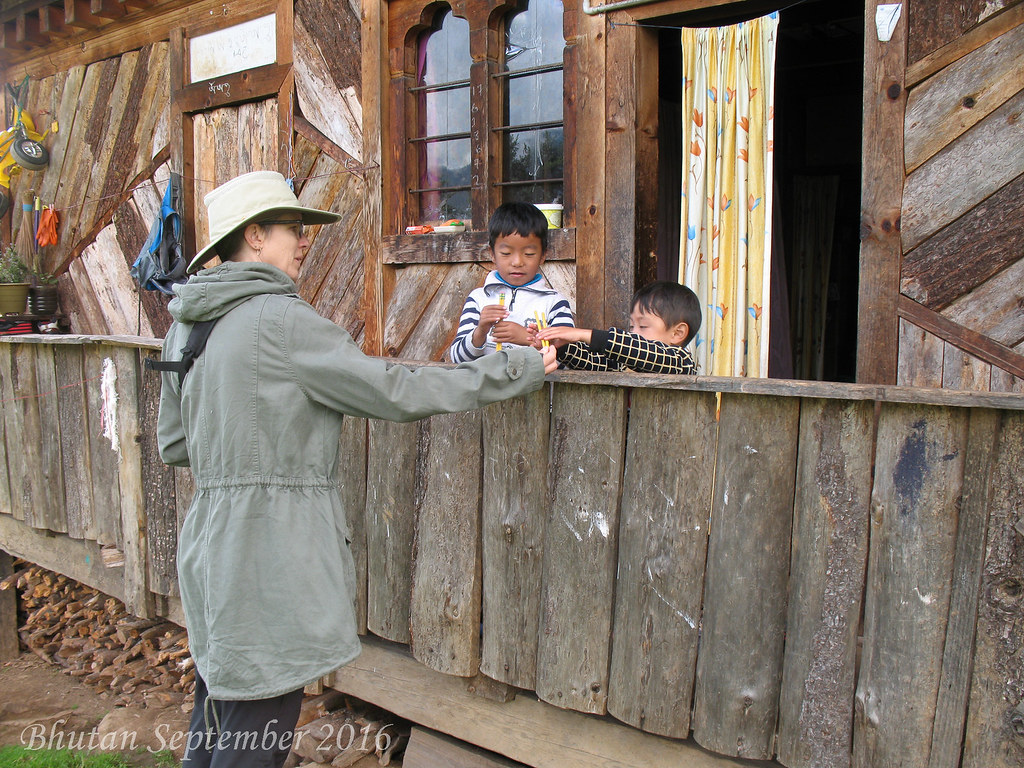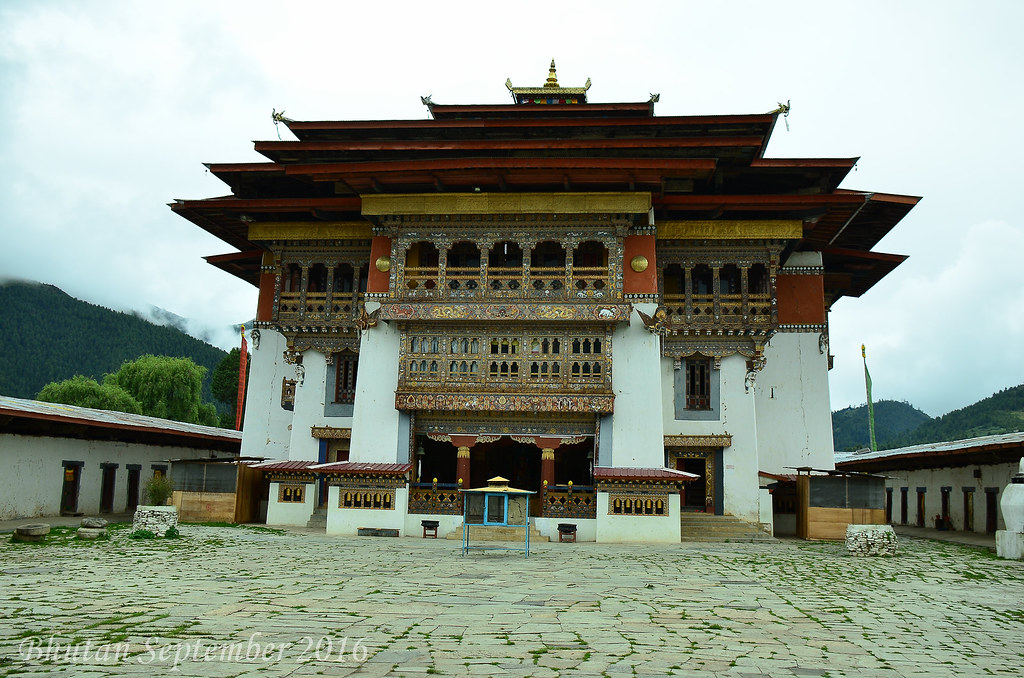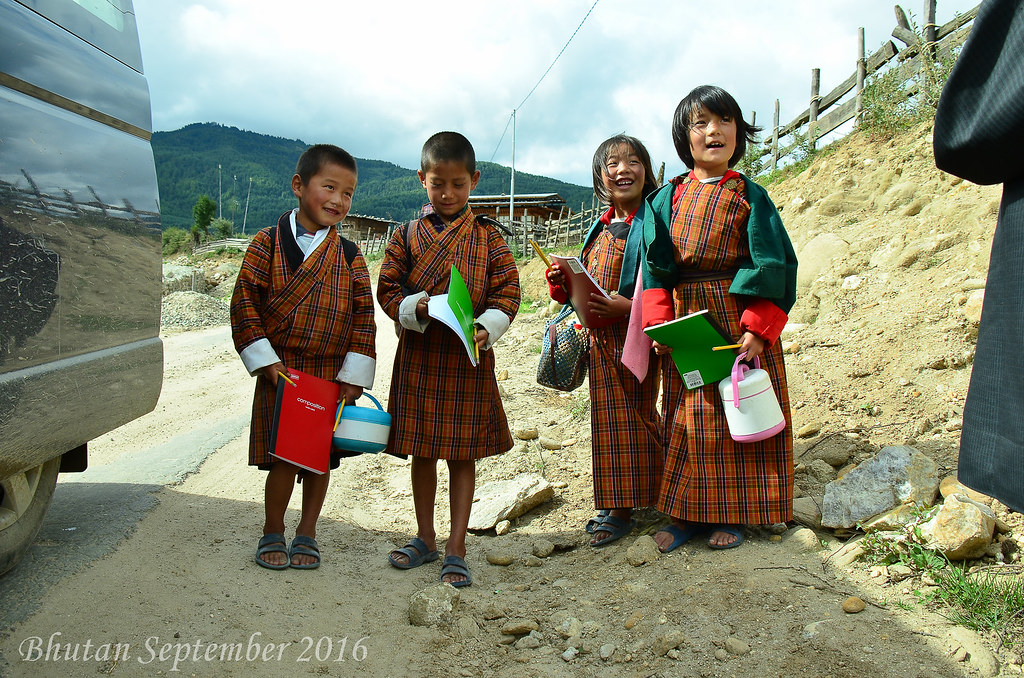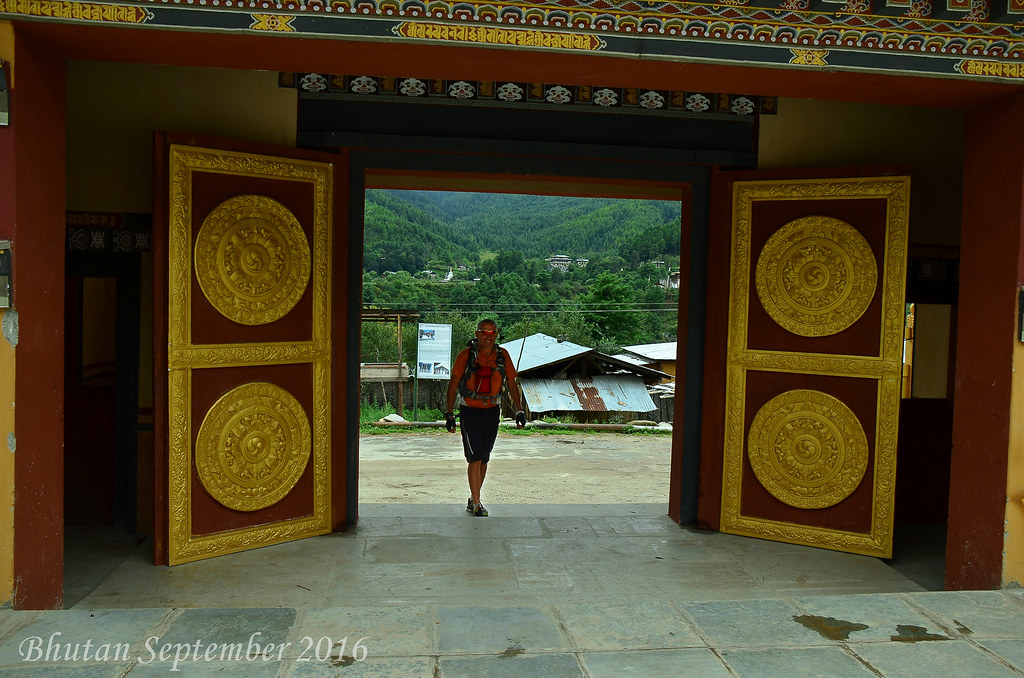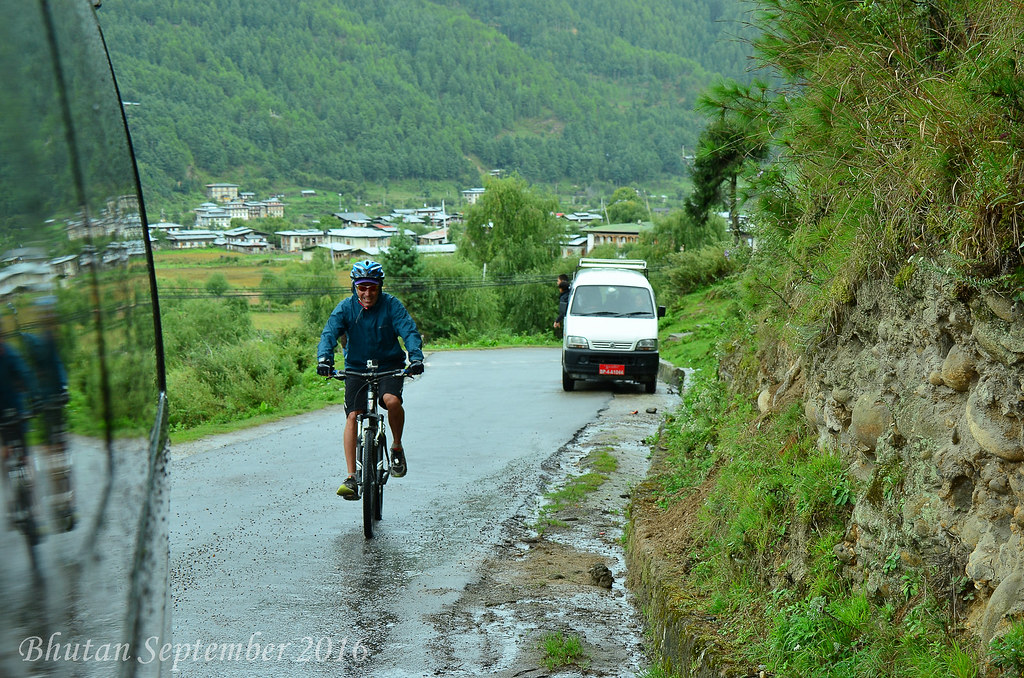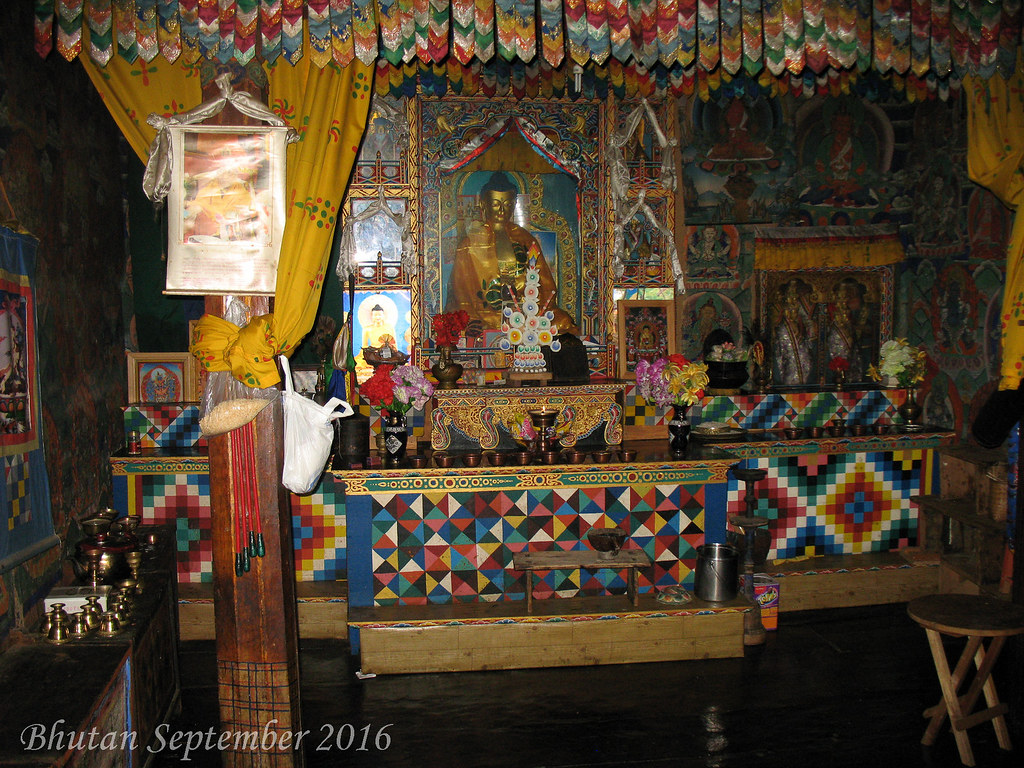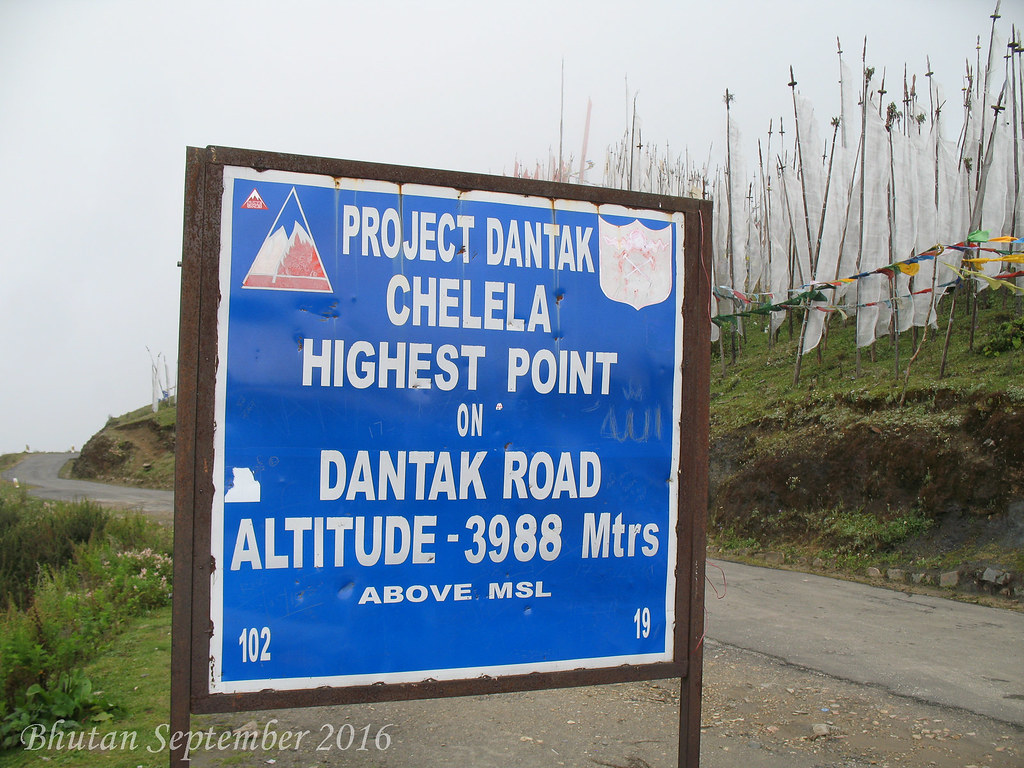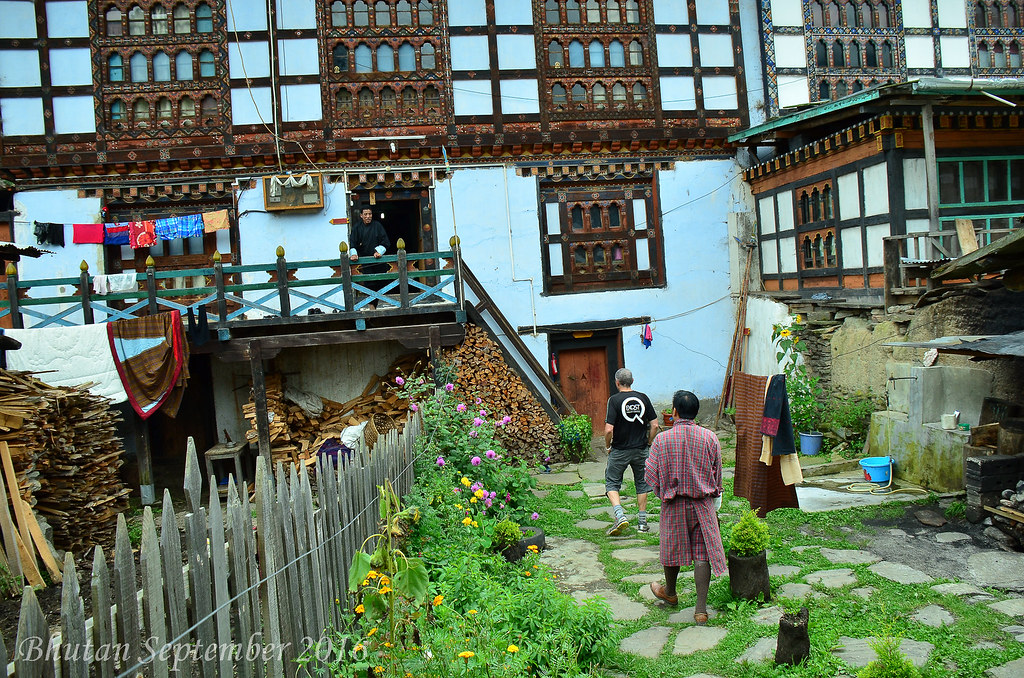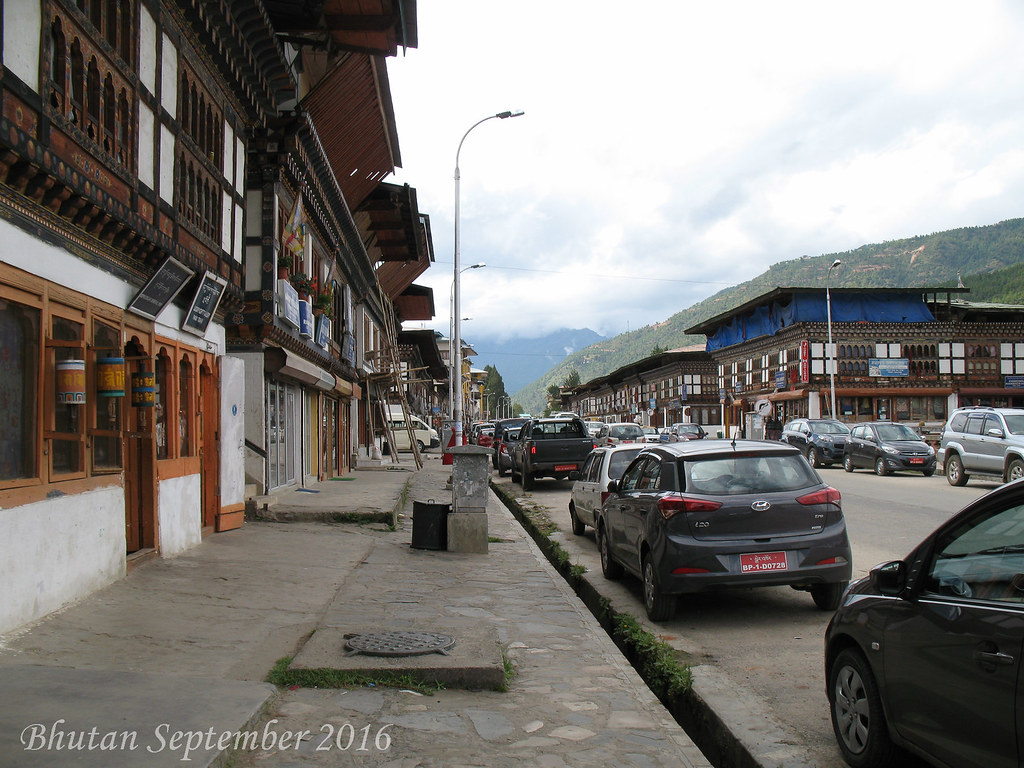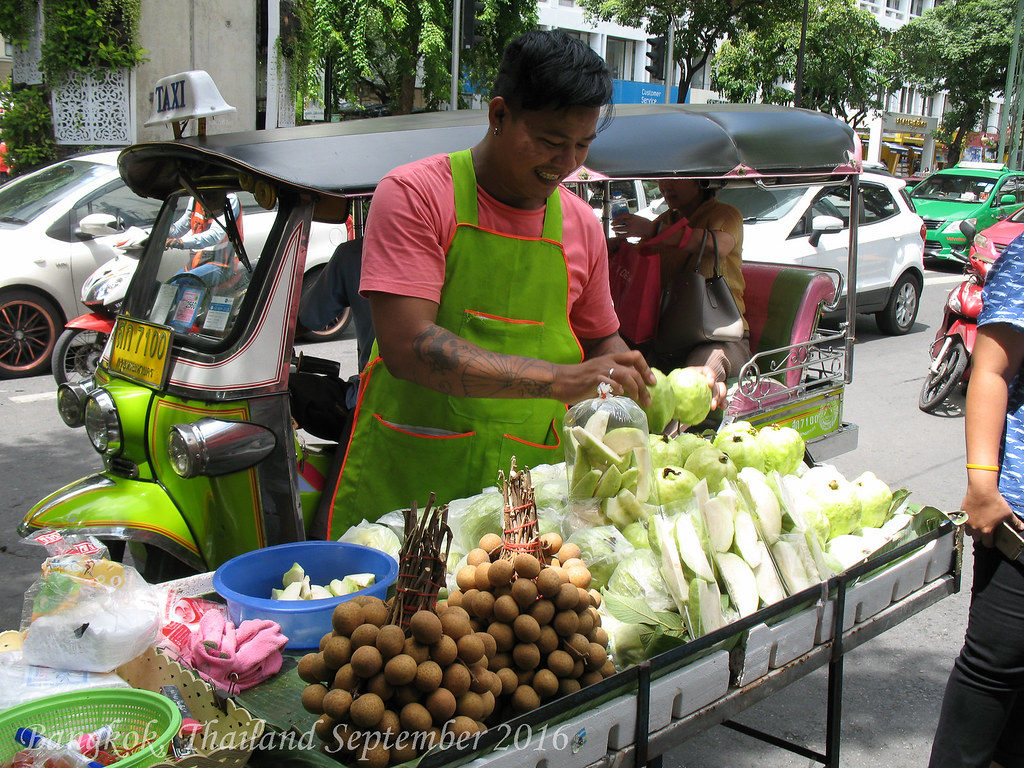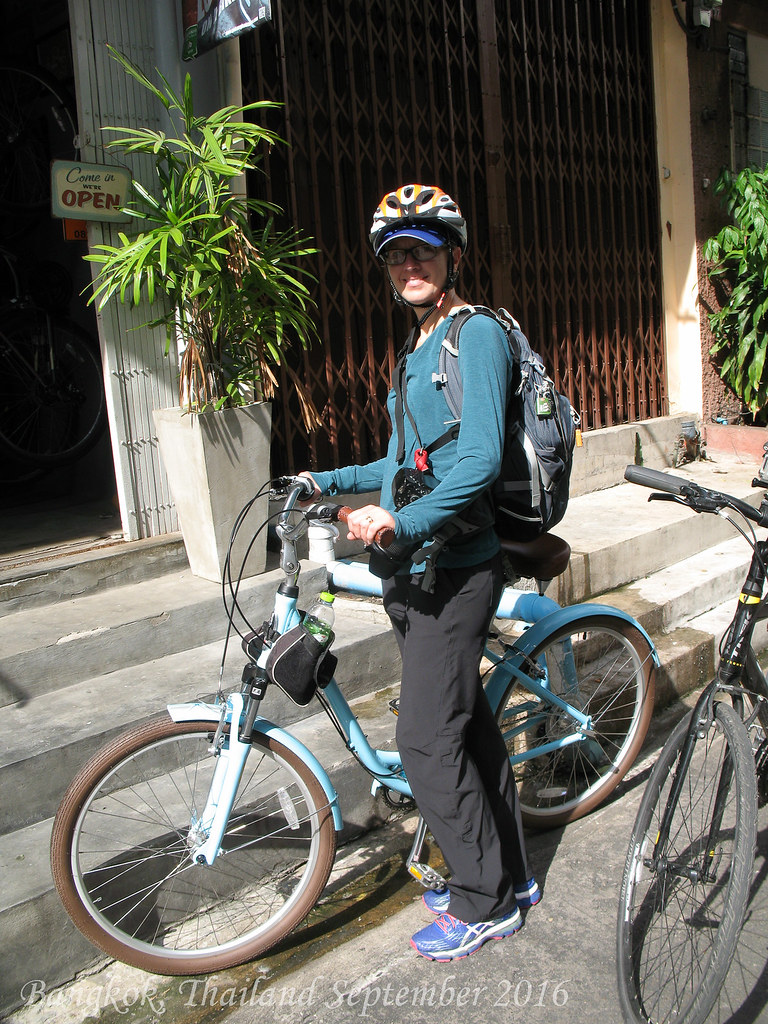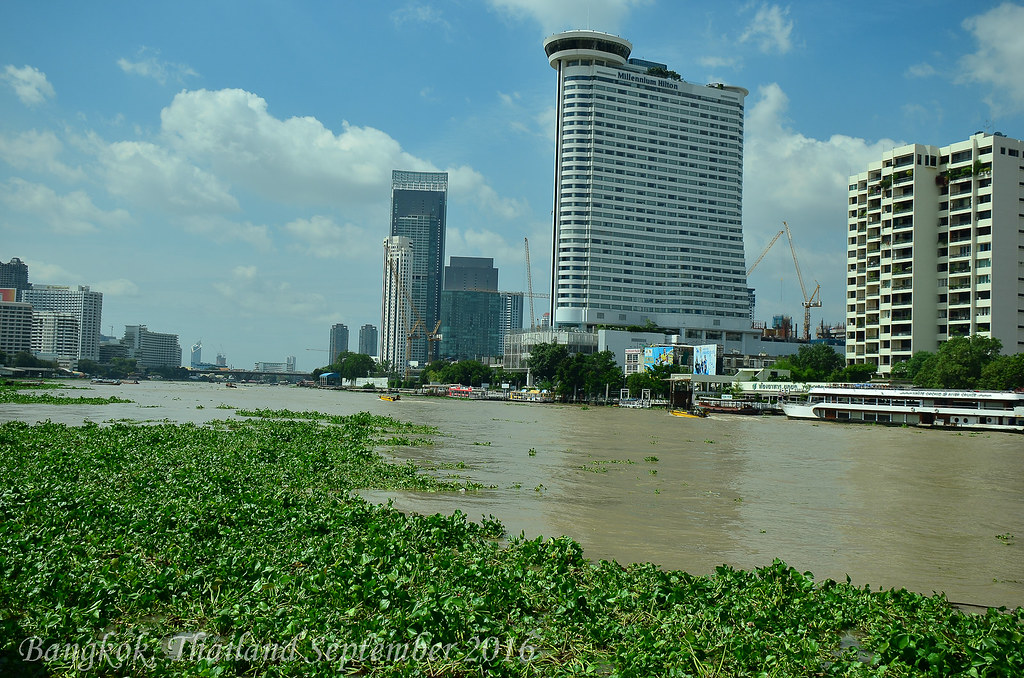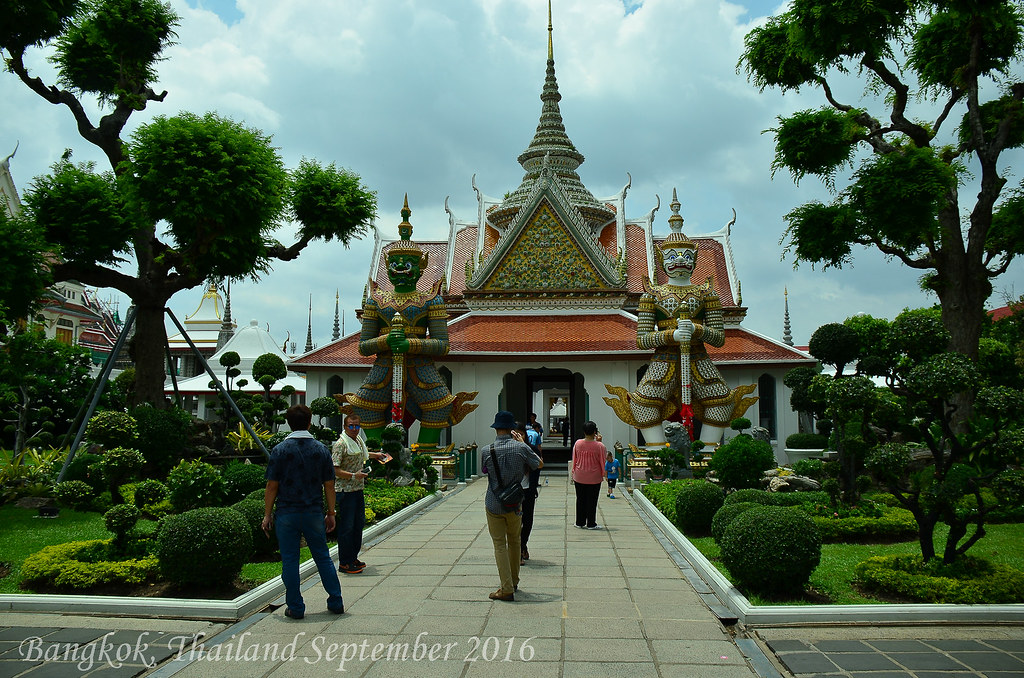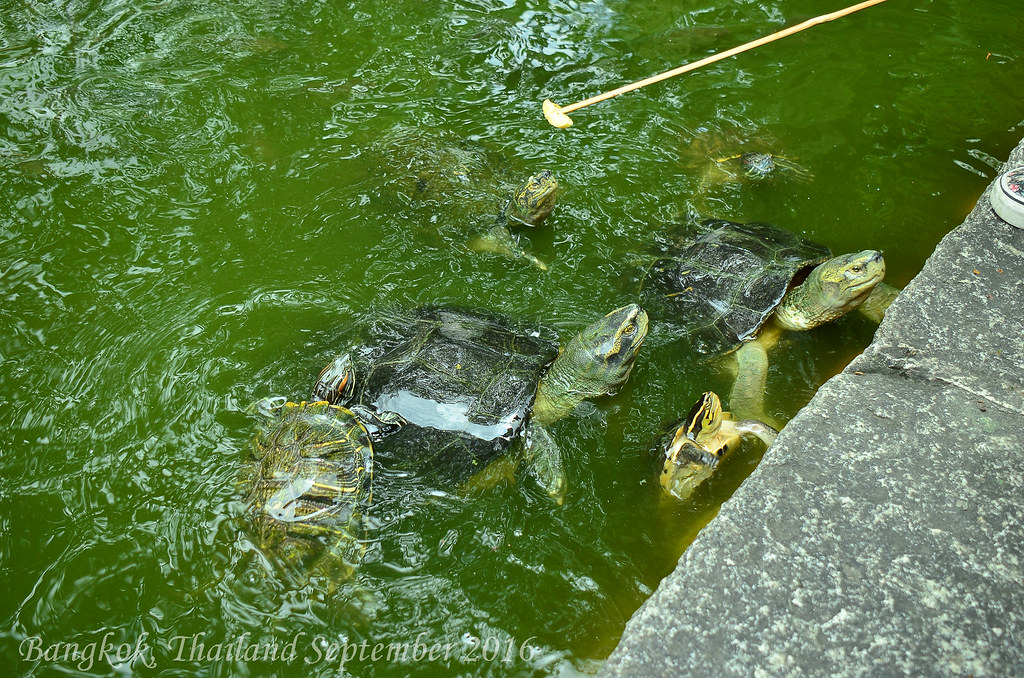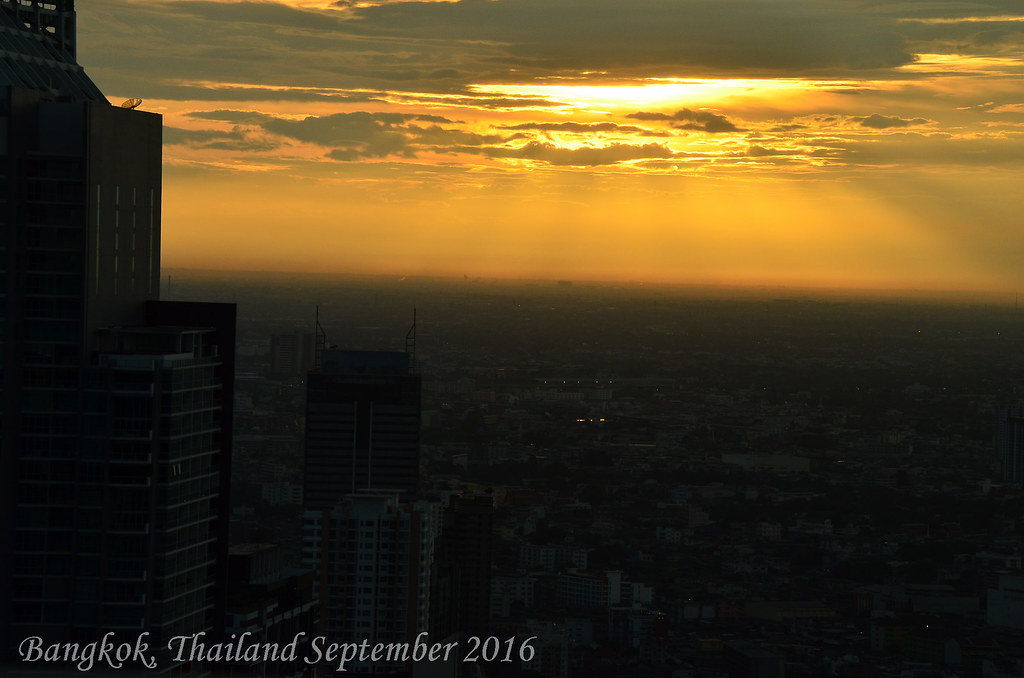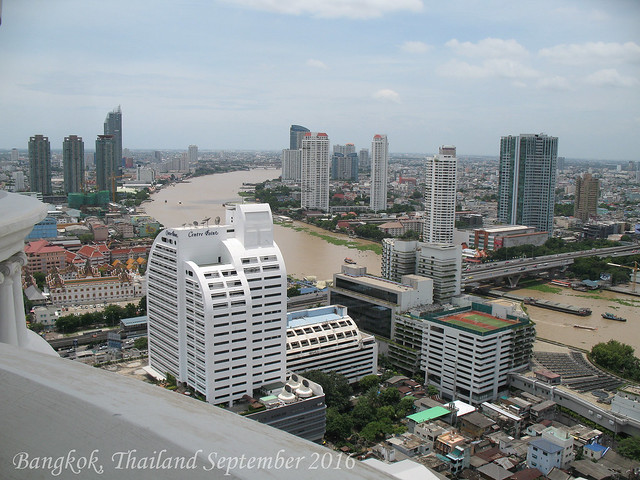All Pictures and Video at the bottom on this post!
Before I go into our experience traveling throughout Bhutan. I would like to give a shout out to Bhutan Karma Trails. Bhutan Karma Trails and Mr. Sonam Jamtsho who put together a fantastic trip for us. I highly recommend them.
You asked for it, you got it! Bhutan; Article 9 of Bhutan's constitution states, "The State shall strive to promote those circumstances that will enable the successful pursuit of Gross National Happiness". Last year it was voted overwhelming on LifeOfDUG.com that I visit Bhutan known as one of the happiest countries on earth. The Constitution also states 60% of the country must remain under forest it is currently at 80%, and all farming must be organic!
Bhutan a small country bordered by India, Tibet(China), nestled high up in the Himalaya Mountains. Besides crossing one of the borders from a neighboring country, the only way to fly to Bhutan is through one of two airports. Kathmandu, Nepal or Bangkok, Thailand and there is only one airline that flies into Bhutan, Drukair, the national airline of Bhutan.
As we arrived at the Bangkok airport we found it was a simple process to locate Drukair. The Bangkok airport is well laid out with clear large signs everywhere. Once in line to pick up our boarding passes, we were quickly pulled out of line and offered first class seating. We were told they love Americans in Bhutan and wanted to upgrade us to first class.
What a great gesture, not even in Bhutan yet, but we are liking it already.
The flight was great and service fantastic. One slight deviation, I had thought the flight was direct Bangkok, Thailand to Paro, Bhutan. Slight change in plans a quick stop in Kolkata, India, I goofed up, if I would of know this ahead of time I would of scheduled a day or two in Kolkata, India. After a quick pit stop we were back in the air and on our way to Bhutan.
The best word to describe landing into Paro would be "exhilarating". As we approached the Paro airport which is situated at the bottom of a steep mountain valley, the mountains appear to almost reach out and touch the wings of the plane. As the pilot guns the engines to maintain lift the winds ratcheting haphazardly through the valley. Like I said exhilarating.
Clearing immigration and customs was a breeze our guide Phurpa and driver Ugyn were waiting as
we exited the terminal. The weather forecast was for slight rain and chilly, but the skies were clear and the temperature warm.
We would later rename Phurpa to Mr. Popular as his phone was always ringing and he knew all the other guides. We would rename Ugyn to Mr. Social as a driver Ugyn has a lot of down time, during this down time he always found folks to chit chat with. We were very lucky both Phurpa and Ugyn turned out to be excellent at their jobs and great traveling companions.
We arrived in Bhutan on September 10th at 12:20 PM and we will be departing September 25th 7:30 AM roughly 15 days in Bhutan.
From the Paro airport, we heading to Thimphu-the capital city of Bhutan. Bhutan has a population of about 700,000 people with 200,000 living in or around the capital. We stop to visit the 14th century Buddhist Temple -Tamchog Lakhang this temple lies across the river we had been driving along. The temple was built by the famous Tibetan Iron Bridge Builder-Drubtob Thangtong Gyalpo who was a renowned Buddhist saint, yogi, physician, architect, engineer and what not! The temple is still owned and maintained by his descendants. We took a walk to visit the Temple, which meant we had to cross the original iron bridge. We had confidence this bridge was safe as many before us had crossed over the last several centuries.
As we continued our journey to Thimphu, our guide kept reminding us that the current road we were
traveling on was one of the best in all of Bhutan and we should not expect these same type of roads as we head into the more rural areas of the east. We continually saw work being done to the road at one point having to stop as some construction was taking place.
We had lunch at a fantastic place in the center of town before going for a tour of the original fortress, Tashichho Dzong that is now used as a place of worship and government affairs. We would later learn each district has a fortress. In past times before the unification of Bhutan into one kingdom, the fortresses were there to defend each districts territory, mainly from Tibet.
We had, had a long day so decided to call it quits, we were so tired we even skip dinner.
We are staying at Hotel Druk a top notch place in a great location right off the town square / clock tower.
We did go for a short walk to get some cash from an ATM and buy some bottled water. The town was hopping with activity.
DAY 2 - Sunday, September 11th
After a great nights sleep we got up early for a short run, it had been several days of go, go, go, and our legs were ready to be stretched out. We did fairly well considering Thimphu is located at 7,500 feet in elevation.
Following breakfast, we set out to visit more sights of Thimphu. We began by touring the National Memorial Stupa built in memory of the third king, Changangkha lhakang.
 A Stupa is a structure containing relics (typically the remains of Buddhist monks or nuns), and used Kuensel Phodrang the 51m/163ft Gigantic statue of Buddha Dordenma. While the Buddha is complete the park is not entirely complete. Fortunately for us the construction did not have an impact on our visit. When complete this will be a place for national celebrations / festivals. From this vantage point we could see the entire Thimphu Valley both north and south.
A Stupa is a structure containing relics (typically the remains of Buddhist monks or nuns), and used Kuensel Phodrang the 51m/163ft Gigantic statue of Buddha Dordenma. While the Buddha is complete the park is not entirely complete. Fortunately for us the construction did not have an impact on our visit. When complete this will be a place for national celebrations / festivals. From this vantage point we could see the entire Thimphu Valley both north and south.
as a place of meditation and worship. It had a very calming feel as we toured the Stupa and took three laps around, we were told people will spend the entire day circling the Stupa in meditation. Our next site to visit is
Next on our tour of Thimphu is the Motithang Takin Preserve where Takin, the national animals are kept! These unique animals are thought to come from the body of a cow and a head of a god. The preserve houses Takins that have been rescued, once healthy they will be return to the wild in the high altitude mountain area. Very unique animals.
On our way back to town we stopped at another temple this one over looking the center of Thimphu.
Once back in town we had a just ok to poor lunch at Edelweiss this concerned us, was this what the food would be like during this trip? After lunch we walked the weekend market, that is actually now open from Wednesday to Sunday. Most of the items in the market are imported, but as the country works to be self sustaining, they have created a section for local organic farmers. They are trying to encourage the village farmers to grow more organic foods that can be sold in the capital city. We bought some apples from a local farmer, they tasted very fresh and sweet.
We continue walking through town and found a local archery tournament to watch. Archery is the national sport of Bhutan. I was amazed at the precision of these archers. They were aiming at a target the size of a basket ball 145 meters away. I could hardly see the target, let alone hit it.
We took a few shots, it was sad.
At this point the traffic was horrendous so we decided to walk back to the hotel. At one point in Bhutan's history there was one traffic light. No one paid any attention to this traffic light, so that one light has been replaced by a live policemen. They take two 4 hour shifts and direct traffic about 8 hours a day. Now Bhutan has "NO" traffic lights.
Back at the hotel for some dinner and sleep. Dinner was very good much to our relief.
DAY 3 - Monday, September 12th
We got up early and went for an 8 mile run with steep hills and an elevation of starting 7,500 feet and maximum elevation of 10,000 feet, it was not pretty.
We had plan to attend a national festival called Thimphu Tsechu, but unfortunately the date changed, so we will be going to a private festival instead.
During the months of September and October Bhutan has dance festivals throughout the country. We had scheduled our travels to coincide with when we thought the Thimphu Tsechu festival would take place. Unfortunately these festival dates are rather liquid and this festival date
changed to October. With being a VIP and with Margarite being a double VIP. A private festival was arranged. These festivals are preformed by musicians and dancers, each dance representing part of the Bhutanese culture. There were welcome dances, harvest dances, dances for the gods, as well as a cremation dance. This private festival took place at Kuenselphodrang Nature Park, on a clearing looking over the capital on one side and the giant Buddha on the other. The dancers took a break so we could all enjoy a traditional Bhutan lunch together before the festival finished. What a great experience.
After the festival we were invited by a local family to have dinner at their home.
Before heading to dinner, we stopped by a women's weaving shop where the women hand weaved beautifully designed fabrics. Each takes anywhere from 6 months to a year to complete. They sell for between $1,000 and $3,000. This makes sense since the average income per family is $2,500 per year.
After the weaving shop, we met up with the family that invited us to dinner, they took us to the organic market to shop for fresh vegetables. Then to the local butcher for some chicken and beef. Having traveled to many developing countries this sight was not new to us. Big pieces of beef hanging from hooks, no refrigeration and flies everywhere. We picked out a side of beef and our steak was butcher right in front of us. The beef and chicken came from the south of Bhutan. At least that is what we were told. Bhutanese normally do not butcher animals, they do not believe in killing at all. Most of the animal food products are imported from India.
The family's home was an apartment above local shops. The shops are on the ground floor. The apartment is well decorated, one corner of the living room was dedicated to the worship of the
Buddhist gods.
We learned to cook Bhutanese style. Very simple recipes with few ingredients but very tasty. They only had a stove for cooking, no oven. They did all the prep sitting on the floor and they enjoy the meal sitting on the living room floor. It was fantastic to experience a real Bhutanese family dinner.
The family was very gracious and showed us how to prepare each dish. I enjoyed everything, Margarite not so much. I guess her level of hygiene is higher than mine. We wanted to pay for the food, they refused, finally we agreed to a split 50/50. Total cost for us $7.00 U.S.D.
DAY 4 - Tuesday September 13th
Today we started out with a hike to the Phajoding Monastery and Ttemple. The hike starts at 8,000 feet, the temple our final destination was at 12,000 feet. The hike went through rich pine forest and evergreen trees. The distance one way was 3.5 miles. You can do the math, 4,000 foot of elevation
change in just 3.5 miles, it was steep. When we got to the monastery we were in the clouds, literally in the clouds. At the temple we met the monk / caretaker, he lives in the temple full time. He is 75 and has not left the temple in over 16 years.
We enjoyed lunch with a group of monks at the monastery, before hiking back down in the pouring rain. The clouds had opened up and it was a full down pour for the entire hike back. This made for a rather slippery hike, and yes I fell a few times, but not Margarite.
The guide was amazed with the time we completed the hike, he allocated 4 hours one way and he was
not even sure we would get to the top. We did the complete round trip in less than 4 hours. Now that the hike was complete, he was ready to try to kill us. He had arranged to have two mountain waiting for us at the end of the hike. He instructed us that it would be fun if we rode back into town. Remember it is pouring rain! We will be hitting many hills ranging in elevation from 8,500 down to 7,500 feet. We had no idea where we were going, so if we did not keep up with the van we would be lost. At this point with all the rain we were soaked through to our underwear, even our hiking boots were water logged. We were riding down these steep hills, pouring rain, dirt and gravel on the road, on bikes that we had no idea if the brakes would work, knowing around the next bend would be a steep up hill, I kept saying to myself, I have the best traveling buddy in the world, putting up with all the stuff I get us into.
After getting dried and cleaned up we had a great dinner. After our first disappointing lunch the food has been rather enjoyable.
DAY 5 - Wednesday September14th
Today we are leaving Thimphu behind, the road we will be taking climbs and crosses the most scenic Dochula Pass (3,150m/10, 008 ft.) and offers breathtaking view of the Eastern Himalayas. At the top of the pass we stopped at a 108 Stupas in honor of the military that died during the attack on Bhutan
by militants. Normally this is the best stop to view the Himalayas, but with all the cloud cover there was not much to see.
While the drive was just 51 miles it took over 3 hours. Some of that time was used to take pictures, have lunch, stop at a road side stand for cucumbers and chilies, but most of the time was spent weaving around pot holes, cows, and dogs sleeping in the road. We thought the roads in Madagascar were bad, the conditions are about the same with the exception of having 1,000 foot drops if you get to close to the edge of the road here in Bhutan.
After checking into the Hotel Drubchu Resort we visited the ‘No Dog’ fertility temple and the old and unique village of Rinchengang. This village is known as the fertility village and many people that want to conceive a child come here. There are very unique paintings on the outside walls of the buildings. It was getting late but we thought we had time to visit Punakha Dzong the most spectacular Dzong fortress of Bhutan, but when we arrived it was to late. Well there is always tomorrow.
DAY 6 - Thursday September 15th
First thing in the morning we visited the Khamsum Yulley Namgyal Chorten Stupa built in the honor of the first kings son, from the top you get beautiful views of the entire valley.
Now it is time for river rafting we will be rafting on the Mo Chu River (Female River) originating in the mountainous hills of Northern Bhutan and Mo Chu river with 10 Km course with 10 rapids of class 2 - 2+ river was chosen for our white water rafting trip, more for the scenery of Bhutan than the action of the river. Near Punakha Dzong, the main river is known as Puna Tsang chu (Male River) which offers even more exciting river run acknowledged mostly for its culturally stimulating and exciting rapids merges with the Mo Chu River. The rafting took us through the most scenic and secluded miles featuring incredibly blue water, breath-taking alpine scenery, sighting of the world’s rarest birds on the backdrop of striking 17th century Punakha Dzong (Fortress).
 After rafting we had a great lunch at a local restaurant. Now it was time for our second attempt to Punakha Dzong the most spectacular Dzong fortress of Bhutan, situated at the confluence of two rivers-Pho Chu and Mo Chu. The Dzong was the capital of Bhutan until 1955 and still serves as the winter residence of Je Khenpo-the chief abbot of the central monastic body. The fortress is important also because it is where the Shabdrung Ngawang Namgyal went into recess and passed away. It was worth the visit. It was clear how the location of this fortress gave the Bhutanese a strategic advantage over the Tibetans.
After rafting we had a great lunch at a local restaurant. Now it was time for our second attempt to Punakha Dzong the most spectacular Dzong fortress of Bhutan, situated at the confluence of two rivers-Pho Chu and Mo Chu. The Dzong was the capital of Bhutan until 1955 and still serves as the winter residence of Je Khenpo-the chief abbot of the central monastic body. The fortress is important also because it is where the Shabdrung Ngawang Namgyal went into recess and passed away. It was worth the visit. It was clear how the location of this fortress gave the Bhutanese a strategic advantage over the Tibetans.
visit
After a great dinner Phurpa and Ugyn took us to a Bhutan Dance club, think if a Strip club in the United States, but tamped down a little to fit the Bhutan Culture.
DAY 7 - Friday September 16th
We drove up into the mountains with our bikes to a monastery where we would start our ride. “Monks join NBI with a wide range of previous mainstream education. Some may not attended school at all whilst others may have completed Class X or even XII. Recognizing the importance of
English in modern Bhutan, ex-Principal Khenpo Tshewang introduced English classes in 2006 making use of students who had completed higher school grades or local volunteers, thus the ability and availability of teachers has varied over time. Nalanda Buddhist Institute divides students into four (4) groups based on their ability with English. The monks learn speaking and conversational skills, vocabulary, reading, and writing. In addition to basic grammar, the monks are taught some subjects in English such as Buddhism, health and disease, and basic science. English examinations are not a part of the standard monastic education but NBI will conduct them from 2014. English classes are held six (6) days a week between 7 and 8pm. The monastery happily welcomes visitors to visit the monastery and speak English with the monks.
We started our ride by driving from about 4,000 feet to close to 9,000 feet to visit a monastery. Most of the monastery's are high in the mountains. After the visits we got on the bikes and rode down to about 7,000 feet (not much peddling) to visit a nunnery. It was very similar to the monastery except nuns instead of monks. Monks are male, nuns female, but with the shaved heads and similar robes there really was not much difference.
We continued the ride down passing many of the historic sights we had already visited. We then crossed the Female River and came to the longest suspension bridge in all of Bhutan. We thought we were to ride across so we did, only to find out later
as far as our guide knew we were the first to ever ride across, most walk.
Margarite had a tough day, her bike had no gears and the front break was locked, but she stuck it out. Biking was a great way to see the country side of Bhutan. We did pick up a local kid who joined us for about half our ride.
As we travel around Bhutan we have been given pencils to the children we meet, they are so gracious when the receive them, always with gratitude and a smile.
Day 8 - Saturday September 17th
Today we head out early for our 3-4 hour 65 miles drive, we are heading for the isolated Phobjikha Valley, also known as Gangtey.
Before leaving Punakha we stopped at the Sunday market, everything grown in Bhutan is organic. We
have been enjoying great meals as we have gotten more rural the food has gotten better and better.
The road gradually climbs through rhododendron and pine forests to descends varying through semitropical vegetation into much cooler highlands of Phobjikha valleys. Onwards, the road passes through dense oak, rhododendron forests and arrive Phobjikha Valley in about 3hrs. Phobjikha is a bowl shaped isolated valley, much less touristy (not that we have seen many tourists) and has one of the most important wildlife preserves.
Phobjikha Valley is the winter home of endangered Black Necked Cranes Bhutan's national bird, which migrate from high Tibetan plateau during winter. After lunch we visit the Sarus Crane Information Center which has informative displays about the cranes and the local environment. The cranes migrate to the Phobjikha Valley from Tibet in November and stay through the winter. Since putting education in place about the decreasing population of the cranes, they population has rebound with a steady growth over the last few years. Even though it is September we got to see a Black Necked Crane as one was injured last January and is being nursed back to health.
Phobjikha Valley which is known as a sacred valley. One of the reason for this designation is, before arriving and leaving each year the Black Neck Cranes circle the local monastery three times. Up until 10 years ago only 3 families lived in the entire valley.
We had planned visit the Gangtey Goemba Monastery-the prime attraction of Phobjika Valley. The monastery complex constitutes the central shrine, monk's quarters and meditation centers. You can enjoy the views of entire valley from the monastery. We decided to hold off until the following day as Margarite did not feel well and we wanted to get her to the hotel.
We are spending the night at Hotel Dewachen though we are off the beaten path the hotel does not lack a luxurious feel.
Day 9 - Sunday September 18th
After breakfast we visited the Gangtey Goemba Monastery that we had missed the day before. The road gradually climbs the Black Mountain Range and crosses the Pele-la pass (3300m/10, 824 ft) where we hoped to stop to appreciate the panoramic views of the snow capped mountains including
Mount Jhomolhari, unfortunately the clouds continued to block the views of the mountains.
Trongsa is considered the ancestral hometown of the Bhutanese Royalties this is where we will be spending the night. As it seems like most towns, Trongsa has a fortress that we must visit, Trongsa Dzong fortress, built in 1644, the fortress used to be the seat of power of Wangchuk Dynasty, before it became the ruler of entire Bhutan. Traditionally the King of Bhutan first becomes the Trongsa Penlop (governor) before being named Crown Prince and eventually King. The Trongsa Dzong is longer and narrower than the other Fortress we have visited. There was extensive damage to the fortress, looking like an
earth quick had hit it. We later found out the damage was caused by explosive used down in the valley to construct a new hydro electric dam.
We are spending the night at Yangkhil Resort , there tag line is "You will not be our guest, you will be our friend." and it was very true, what a lovely place.
Day 10 - Monday September 19th
After breakfast we visit the local Royal Museum - Ta Dzong Museum it originally was the watch tower for the fortress, but now serves as a history Museum.
Leaving Trongsa the road climbs to the Youtongla pass (3425m/11234 ft) and then descends to
Chume, the first of the four Bumthang valleys. We stopped at the roadside village of Zugney to see Yathra weavers at work. Yathra is a deep colored wool textile, a pattern typical to these parts of the country. We finally reached the town of Jakar where we will be spending the next few days.
Each day the condition of the roads got worse and worse, while the drive was more beautiful than the day before the roads were worse. We basically went from one valley to the next. After lunch on the first day I jokingly offered to drive. Our driver threw me the keys, how could I tell him I was joking. Driving a right hand drive, stick shift on the left hand side of the road, where the road is about as wide as the car, and shear drops of a thousand feet or more, and yes two way traffic. I am just glad I offered on the first day and not the second or third day.
One smart decision we made or we think we made, we found out there is a small airfield (I use the term airfield loosely) we chartered a plane back to Paro, rather than drive back and risk our lives again. We offered our driver and guide to join us, but they said they rather drive (maybe they know something we don't), plus the car needs to get back. We still have three days to convince them.
We will be spending the next three nights at the Rinchenling Lodge. The lodge was pleasant but the room was rather musty. Not sure if it was because of the weather in the area or a cleaning issue.
Day 11 - Tuesday September
Today we will be visiting the city to Tang Ogyen Choling about 1.5 hour drive from Jakar in the ancient times Tang Ogyen Choling not only served as a Royal Residence for the local kings but during the internal strife and wars Tang Ogyen Choling played a vital role in manufacturing artilleries
and also a perfect hideout for those local kings and warriors that served for their country a place they relished. Tang, one of the most fertile valleys in Bumthang which is famous for treasure revealers discovered treasure as early as some 600yrs ago. Tang Ogyen Choling residence is now been converted into a museum which used to be one of the summer residence of the Wangchuck dynasty before the unification of the Bhutan kingdom in 1907. Bhutan did not have a currency until 1967 and used grains to barter for salts. The grains were stored at this palace.
We had lunch here and were served by the queen. Very cool, though this family is not part of the Royal Bhutan family they are still considered royalty.
On the way back we stopped at burning lake also known as Mebar tsho . The reason for the name is a god or master had prophecies that he needed to dive into the lake with a oil lamp when he surfaced the lamp was still burning even after being submerged in the lake.
Day 12 - Wednesday September 21st
Before getting started for our bike ride we had a quick archery lesson and got to try our skills, which were not very impressive.
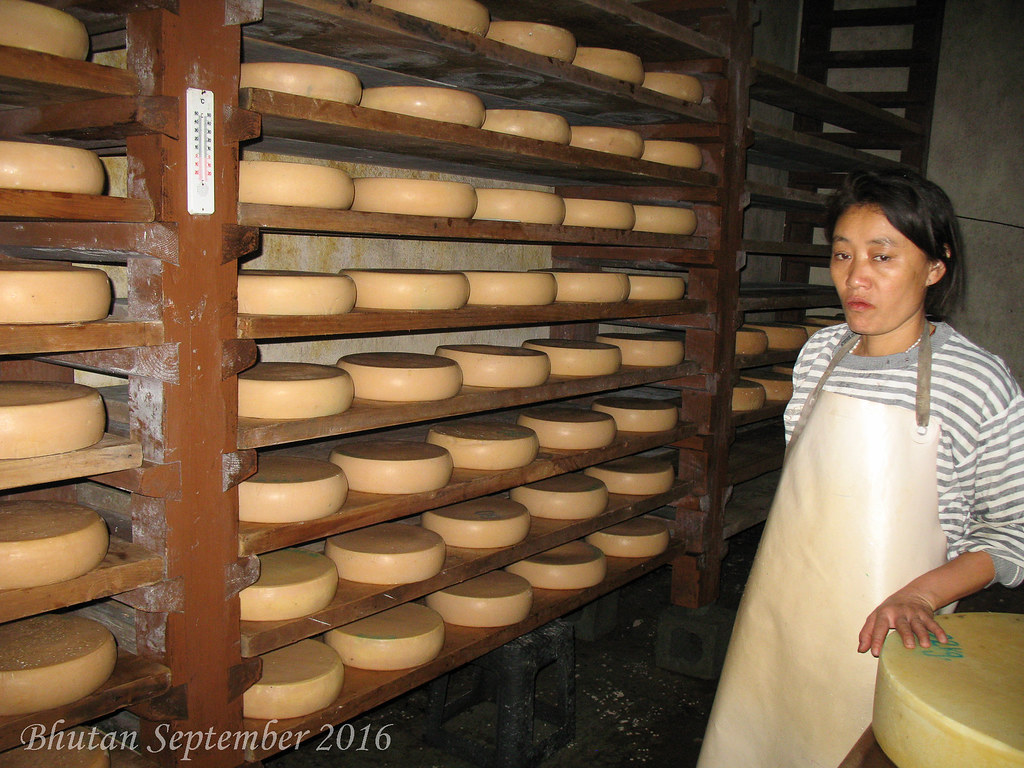 After the archery it was off on our bike tour. Today rather than tour by van we will be touring by. The roads are narrow but smooth and have less traffic as they wind through pine forest, the best part, they are relatively flat. First we visit Jambay Lhakang built in the 7th century by the King Songtsen Gampo of Tibet it’s believed to be one of the 108 temples he built miraculously in a single night in Tibet and neighboring countries. We are also visited Kurjey Lhakhang which is built around the cave where Guru Rinpoche meditated and left the imprint of his body on a rock, Next site is Tamshing Lhakang Monastery one of the most important Nyingma Gompa and is a treasure house of interesting religious Buddhist paintings are the attractions of Jakar.
After the archery it was off on our bike tour. Today rather than tour by van we will be touring by. The roads are narrow but smooth and have less traffic as they wind through pine forest, the best part, they are relatively flat. First we visit Jambay Lhakang built in the 7th century by the King Songtsen Gampo of Tibet it’s believed to be one of the 108 temples he built miraculously in a single night in Tibet and neighboring countries. We are also visited Kurjey Lhakhang which is built around the cave where Guru Rinpoche meditated and left the imprint of his body on a rock, Next site is Tamshing Lhakang Monastery one of the most important Nyingma Gompa and is a treasure house of interesting religious Buddhist paintings are the attractions of Jakar.
Just 400m below Tamshing is a small but rural looking temple called Kunchoksum temple that has some interesting stories.
After visiting the temples we visited a cheese factory, where cheese was made to export to other parts of Bhutan. We also visited the Red Panda brewery, their beer is also exported to other parts of Bhutan.
The bikes were great and a great way to see the sites.
Day 13 - Thursday September 22nd
We were met in Paro by Jamtso, the owner of the booking company we used for this trip. The reason,
Phurpa and Ugyn were still some where between Bumthang and Paro driving on those crazy roads. The flight was easy and much better than the drive, though I would not have wanted to miss the drive at least one way. From the airport we stopped at a traditional farm house and got to see how the family lives. Three generations sharing a home and farm, mostly the farm generates what is needed by the family though if there is extra it will be sold in the market.
After the farm house and some lunch in Paro, we visited Dungtse Lakhang -a 15th century temple, which stands on top of a hillock that resembled to a turtle head shaped demon. Evidently, the temple
was built to suppress the demon and causing troubles in Paro Valley! The temple has unique paintings of the progressive stage of Tantric Buddhist philosophy and important deities of Drukpa Kagyu School. From here we continue to the national museum housed at Ta Dzong-the historic fort that served as the watch tower to guard the Rinpung Dzong. The national museum has rich collection of Buddhist scriptures, murals, Bhutanese textiles, crafts, armors and rich gallery of philatelic collection. We also learned about lot of the wildlife. Most of the land is protected (with little access to tourist) so we were not able to see the animals in their natural habitats as we had traveled throughout Bhutan.
The next two night we will be staying at Hotel Drukchen while the hotel was nice I would not recommend it for two reason, one the food was awful and two it was far to get to town.
Day 14 - Friday September 14th
Today we will be traveling to the remote Haa Valley which is less visited by tourists as it only opened for travel in 2002 only. We drove through dense spruce and larch forests and across Chelela pass (3810m/12,497 ft.)-the highest pass in Bhutan that cars can travel. It separates Paro and Haa Valley.
On a clear day, there are spectacular views of Mt. Jumolhari, Jichu Drake and adjoining peaks to the North West, as well as the view of Haa and Paro valley. Unfortunately for us the skies were full of clouds. From the pass, the road drops to the valley and we were overwhelmed by the pristine nature, pure air and the calmness of the surroundings. Opened for tourism at the beginning of 2002, it is still a unknown destination for tourists; which is a major part of its appeal. The fertile Haa Valley is known for wheat, barley, apples, potatoes and chilies production.
We toured the town and had lunch at a farm house before heading for our drive back. A beautiful area that we could have enjoyed another day at.
Day 15 - Saturday September 24th
Takstang Monastery, also known as Tiger's Nest is probably the most popular hiking and pilgrimage destination in Bhutan. The Monastery clings on a vertical rock face some 2,000ft/600m above the average ground level of Paro Valley.
They say the hike will take about 2 - 2.5 hours one way, we did it in about 1.5 hours. The hike is
rather steep, but well worth it with great views of the valley and the monastery.
As legend goes, Guru Pamasambhanva flew from Tibet to this site on a tiger’s back and subdued the demonic powers obstructing the path of Buddhism into Bhutan.
Once you reach Tiger's nest you realize how spectacular it is with 11 temples built right into the cliff side. The key, get there early as it does fill up with tourist.
After the hike we toured around Paro and enjoyed just relaxing as this will be our last day in Bhutan.
Tomorrow Nepal!
Cheers,
DUG
Pictures
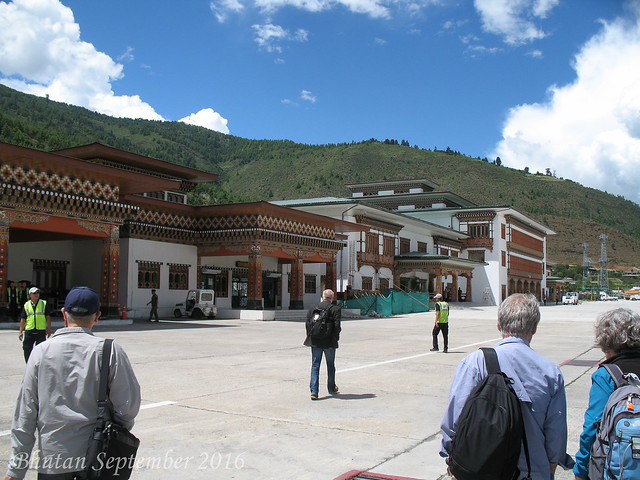
Video
Before I go into our experience traveling throughout Bhutan. I would like to give a shout out to Bhutan Karma Trails. Bhutan Karma Trails and Mr. Sonam Jamtsho who put together a fantastic trip for us. I highly recommend them.
You asked for it, you got it! Bhutan; Article 9 of Bhutan's constitution states, "The State shall strive to promote those circumstances that will enable the successful pursuit of Gross National Happiness". Last year it was voted overwhelming on LifeOfDUG.com that I visit Bhutan known as one of the happiest countries on earth. The Constitution also states 60% of the country must remain under forest it is currently at 80%, and all farming must be organic!
Bhutan a small country bordered by India, Tibet(China), nestled high up in the Himalaya Mountains. Besides crossing one of the borders from a neighboring country, the only way to fly to Bhutan is through one of two airports. Kathmandu, Nepal or Bangkok, Thailand and there is only one airline that flies into Bhutan, Drukair, the national airline of Bhutan.
As we arrived at the Bangkok airport we found it was a simple process to locate Drukair. The Bangkok airport is well laid out with clear large signs everywhere. Once in line to pick up our boarding passes, we were quickly pulled out of line and offered first class seating. We were told they love Americans in Bhutan and wanted to upgrade us to first class.
What a great gesture, not even in Bhutan yet, but we are liking it already.
The flight was great and service fantastic. One slight deviation, I had thought the flight was direct Bangkok, Thailand to Paro, Bhutan. Slight change in plans a quick stop in Kolkata, India, I goofed up, if I would of know this ahead of time I would of scheduled a day or two in Kolkata, India. After a quick pit stop we were back in the air and on our way to Bhutan.
The best word to describe landing into Paro would be "exhilarating". As we approached the Paro airport which is situated at the bottom of a steep mountain valley, the mountains appear to almost reach out and touch the wings of the plane. As the pilot guns the engines to maintain lift the winds ratcheting haphazardly through the valley. Like I said exhilarating.
Clearing immigration and customs was a breeze our guide Phurpa and driver Ugyn were waiting as
we exited the terminal. The weather forecast was for slight rain and chilly, but the skies were clear and the temperature warm.
We would later rename Phurpa to Mr. Popular as his phone was always ringing and he knew all the other guides. We would rename Ugyn to Mr. Social as a driver Ugyn has a lot of down time, during this down time he always found folks to chit chat with. We were very lucky both Phurpa and Ugyn turned out to be excellent at their jobs and great traveling companions.
We arrived in Bhutan on September 10th at 12:20 PM and we will be departing September 25th 7:30 AM roughly 15 days in Bhutan.
From the Paro airport, we heading to Thimphu-the capital city of Bhutan. Bhutan has a population of about 700,000 people with 200,000 living in or around the capital. We stop to visit the 14th century Buddhist Temple -Tamchog Lakhang this temple lies across the river we had been driving along. The temple was built by the famous Tibetan Iron Bridge Builder-Drubtob Thangtong Gyalpo who was a renowned Buddhist saint, yogi, physician, architect, engineer and what not! The temple is still owned and maintained by his descendants. We took a walk to visit the Temple, which meant we had to cross the original iron bridge. We had confidence this bridge was safe as many before us had crossed over the last several centuries.
As we continued our journey to Thimphu, our guide kept reminding us that the current road we were
traveling on was one of the best in all of Bhutan and we should not expect these same type of roads as we head into the more rural areas of the east. We continually saw work being done to the road at one point having to stop as some construction was taking place.
We had lunch at a fantastic place in the center of town before going for a tour of the original fortress, Tashichho Dzong that is now used as a place of worship and government affairs. We would later learn each district has a fortress. In past times before the unification of Bhutan into one kingdom, the fortresses were there to defend each districts territory, mainly from Tibet.
We had, had a long day so decided to call it quits, we were so tired we even skip dinner.
We are staying at Hotel Druk a top notch place in a great location right off the town square / clock tower.
We did go for a short walk to get some cash from an ATM and buy some bottled water. The town was hopping with activity.
DAY 2 - Sunday, September 11th
After a great nights sleep we got up early for a short run, it had been several days of go, go, go, and our legs were ready to be stretched out. We did fairly well considering Thimphu is located at 7,500 feet in elevation.
Following breakfast, we set out to visit more sights of Thimphu. We began by touring the National Memorial Stupa built in memory of the third king, Changangkha lhakang.
 A Stupa is a structure containing relics (typically the remains of Buddhist monks or nuns), and used Kuensel Phodrang the 51m/163ft Gigantic statue of Buddha Dordenma. While the Buddha is complete the park is not entirely complete. Fortunately for us the construction did not have an impact on our visit. When complete this will be a place for national celebrations / festivals. From this vantage point we could see the entire Thimphu Valley both north and south.
A Stupa is a structure containing relics (typically the remains of Buddhist monks or nuns), and used Kuensel Phodrang the 51m/163ft Gigantic statue of Buddha Dordenma. While the Buddha is complete the park is not entirely complete. Fortunately for us the construction did not have an impact on our visit. When complete this will be a place for national celebrations / festivals. From this vantage point we could see the entire Thimphu Valley both north and south.
as a place of meditation and worship. It had a very calming feel as we toured the Stupa and took three laps around, we were told people will spend the entire day circling the Stupa in meditation. Our next site to visit is
Next on our tour of Thimphu is the Motithang Takin Preserve where Takin, the national animals are kept! These unique animals are thought to come from the body of a cow and a head of a god. The preserve houses Takins that have been rescued, once healthy they will be return to the wild in the high altitude mountain area. Very unique animals.
On our way back to town we stopped at another temple this one over looking the center of Thimphu.
Once back in town we had a just ok to poor lunch at Edelweiss this concerned us, was this what the food would be like during this trip? After lunch we walked the weekend market, that is actually now open from Wednesday to Sunday. Most of the items in the market are imported, but as the country works to be self sustaining, they have created a section for local organic farmers. They are trying to encourage the village farmers to grow more organic foods that can be sold in the capital city. We bought some apples from a local farmer, they tasted very fresh and sweet.
We continue walking through town and found a local archery tournament to watch. Archery is the national sport of Bhutan. I was amazed at the precision of these archers. They were aiming at a target the size of a basket ball 145 meters away. I could hardly see the target, let alone hit it.
We took a few shots, it was sad.
At this point the traffic was horrendous so we decided to walk back to the hotel. At one point in Bhutan's history there was one traffic light. No one paid any attention to this traffic light, so that one light has been replaced by a live policemen. They take two 4 hour shifts and direct traffic about 8 hours a day. Now Bhutan has "NO" traffic lights.
Back at the hotel for some dinner and sleep. Dinner was very good much to our relief.
DAY 3 - Monday, September 12th
We got up early and went for an 8 mile run with steep hills and an elevation of starting 7,500 feet and maximum elevation of 10,000 feet, it was not pretty.
We had plan to attend a national festival called Thimphu Tsechu, but unfortunately the date changed, so we will be going to a private festival instead.
During the months of September and October Bhutan has dance festivals throughout the country. We had scheduled our travels to coincide with when we thought the Thimphu Tsechu festival would take place. Unfortunately these festival dates are rather liquid and this festival date
changed to October. With being a VIP and with Margarite being a double VIP. A private festival was arranged. These festivals are preformed by musicians and dancers, each dance representing part of the Bhutanese culture. There were welcome dances, harvest dances, dances for the gods, as well as a cremation dance. This private festival took place at Kuenselphodrang Nature Park, on a clearing looking over the capital on one side and the giant Buddha on the other. The dancers took a break so we could all enjoy a traditional Bhutan lunch together before the festival finished. What a great experience.
After the festival we were invited by a local family to have dinner at their home.
Before heading to dinner, we stopped by a women's weaving shop where the women hand weaved beautifully designed fabrics. Each takes anywhere from 6 months to a year to complete. They sell for between $1,000 and $3,000. This makes sense since the average income per family is $2,500 per year.
After the weaving shop, we met up with the family that invited us to dinner, they took us to the organic market to shop for fresh vegetables. Then to the local butcher for some chicken and beef. Having traveled to many developing countries this sight was not new to us. Big pieces of beef hanging from hooks, no refrigeration and flies everywhere. We picked out a side of beef and our steak was butcher right in front of us. The beef and chicken came from the south of Bhutan. At least that is what we were told. Bhutanese normally do not butcher animals, they do not believe in killing at all. Most of the animal food products are imported from India.
The family's home was an apartment above local shops. The shops are on the ground floor. The apartment is well decorated, one corner of the living room was dedicated to the worship of the
Buddhist gods.
We learned to cook Bhutanese style. Very simple recipes with few ingredients but very tasty. They only had a stove for cooking, no oven. They did all the prep sitting on the floor and they enjoy the meal sitting on the living room floor. It was fantastic to experience a real Bhutanese family dinner.
The family was very gracious and showed us how to prepare each dish. I enjoyed everything, Margarite not so much. I guess her level of hygiene is higher than mine. We wanted to pay for the food, they refused, finally we agreed to a split 50/50. Total cost for us $7.00 U.S.D.
DAY 4 - Tuesday September 13th
Today we started out with a hike to the Phajoding Monastery and Ttemple. The hike starts at 8,000 feet, the temple our final destination was at 12,000 feet. The hike went through rich pine forest and evergreen trees. The distance one way was 3.5 miles. You can do the math, 4,000 foot of elevation
change in just 3.5 miles, it was steep. When we got to the monastery we were in the clouds, literally in the clouds. At the temple we met the monk / caretaker, he lives in the temple full time. He is 75 and has not left the temple in over 16 years.
We enjoyed lunch with a group of monks at the monastery, before hiking back down in the pouring rain. The clouds had opened up and it was a full down pour for the entire hike back. This made for a rather slippery hike, and yes I fell a few times, but not Margarite.
The guide was amazed with the time we completed the hike, he allocated 4 hours one way and he was
not even sure we would get to the top. We did the complete round trip in less than 4 hours. Now that the hike was complete, he was ready to try to kill us. He had arranged to have two mountain waiting for us at the end of the hike. He instructed us that it would be fun if we rode back into town. Remember it is pouring rain! We will be hitting many hills ranging in elevation from 8,500 down to 7,500 feet. We had no idea where we were going, so if we did not keep up with the van we would be lost. At this point with all the rain we were soaked through to our underwear, even our hiking boots were water logged. We were riding down these steep hills, pouring rain, dirt and gravel on the road, on bikes that we had no idea if the brakes would work, knowing around the next bend would be a steep up hill, I kept saying to myself, I have the best traveling buddy in the world, putting up with all the stuff I get us into.
After getting dried and cleaned up we had a great dinner. After our first disappointing lunch the food has been rather enjoyable.
DAY 5 - Wednesday September14th
Today we are leaving Thimphu behind, the road we will be taking climbs and crosses the most scenic Dochula Pass (3,150m/10, 008 ft.) and offers breathtaking view of the Eastern Himalayas. At the top of the pass we stopped at a 108 Stupas in honor of the military that died during the attack on Bhutan
by militants. Normally this is the best stop to view the Himalayas, but with all the cloud cover there was not much to see.
While the drive was just 51 miles it took over 3 hours. Some of that time was used to take pictures, have lunch, stop at a road side stand for cucumbers and chilies, but most of the time was spent weaving around pot holes, cows, and dogs sleeping in the road. We thought the roads in Madagascar were bad, the conditions are about the same with the exception of having 1,000 foot drops if you get to close to the edge of the road here in Bhutan.
After checking into the Hotel Drubchu Resort we visited the ‘No Dog’ fertility temple and the old and unique village of Rinchengang. This village is known as the fertility village and many people that want to conceive a child come here. There are very unique paintings on the outside walls of the buildings. It was getting late but we thought we had time to visit Punakha Dzong the most spectacular Dzong fortress of Bhutan, but when we arrived it was to late. Well there is always tomorrow.
DAY 6 - Thursday September 15th
First thing in the morning we visited the Khamsum Yulley Namgyal Chorten Stupa built in the honor of the first kings son, from the top you get beautiful views of the entire valley.
Now it is time for river rafting we will be rafting on the Mo Chu River (Female River) originating in the mountainous hills of Northern Bhutan and Mo Chu river with 10 Km course with 10 rapids of class 2 - 2+ river was chosen for our white water rafting trip, more for the scenery of Bhutan than the action of the river. Near Punakha Dzong, the main river is known as Puna Tsang chu (Male River) which offers even more exciting river run acknowledged mostly for its culturally stimulating and exciting rapids merges with the Mo Chu River. The rafting took us through the most scenic and secluded miles featuring incredibly blue water, breath-taking alpine scenery, sighting of the world’s rarest birds on the backdrop of striking 17th century Punakha Dzong (Fortress).
 After rafting we had a great lunch at a local restaurant. Now it was time for our second attempt to Punakha Dzong the most spectacular Dzong fortress of Bhutan, situated at the confluence of two rivers-Pho Chu and Mo Chu. The Dzong was the capital of Bhutan until 1955 and still serves as the winter residence of Je Khenpo-the chief abbot of the central monastic body. The fortress is important also because it is where the Shabdrung Ngawang Namgyal went into recess and passed away. It was worth the visit. It was clear how the location of this fortress gave the Bhutanese a strategic advantage over the Tibetans.
After rafting we had a great lunch at a local restaurant. Now it was time for our second attempt to Punakha Dzong the most spectacular Dzong fortress of Bhutan, situated at the confluence of two rivers-Pho Chu and Mo Chu. The Dzong was the capital of Bhutan until 1955 and still serves as the winter residence of Je Khenpo-the chief abbot of the central monastic body. The fortress is important also because it is where the Shabdrung Ngawang Namgyal went into recess and passed away. It was worth the visit. It was clear how the location of this fortress gave the Bhutanese a strategic advantage over the Tibetans.
visit
After a great dinner Phurpa and Ugyn took us to a Bhutan Dance club, think if a Strip club in the United States, but tamped down a little to fit the Bhutan Culture.
DAY 7 - Friday September 16th
We drove up into the mountains with our bikes to a monastery where we would start our ride. “Monks join NBI with a wide range of previous mainstream education. Some may not attended school at all whilst others may have completed Class X or even XII. Recognizing the importance of
English in modern Bhutan, ex-Principal Khenpo Tshewang introduced English classes in 2006 making use of students who had completed higher school grades or local volunteers, thus the ability and availability of teachers has varied over time. Nalanda Buddhist Institute divides students into four (4) groups based on their ability with English. The monks learn speaking and conversational skills, vocabulary, reading, and writing. In addition to basic grammar, the monks are taught some subjects in English such as Buddhism, health and disease, and basic science. English examinations are not a part of the standard monastic education but NBI will conduct them from 2014. English classes are held six (6) days a week between 7 and 8pm. The monastery happily welcomes visitors to visit the monastery and speak English with the monks.
We started our ride by driving from about 4,000 feet to close to 9,000 feet to visit a monastery. Most of the monastery's are high in the mountains. After the visits we got on the bikes and rode down to about 7,000 feet (not much peddling) to visit a nunnery. It was very similar to the monastery except nuns instead of monks. Monks are male, nuns female, but with the shaved heads and similar robes there really was not much difference.
We continued the ride down passing many of the historic sights we had already visited. We then crossed the Female River and came to the longest suspension bridge in all of Bhutan. We thought we were to ride across so we did, only to find out later
as far as our guide knew we were the first to ever ride across, most walk.
Margarite had a tough day, her bike had no gears and the front break was locked, but she stuck it out. Biking was a great way to see the country side of Bhutan. We did pick up a local kid who joined us for about half our ride.
As we travel around Bhutan we have been given pencils to the children we meet, they are so gracious when the receive them, always with gratitude and a smile.
Day 8 - Saturday September 17th
Today we head out early for our 3-4 hour 65 miles drive, we are heading for the isolated Phobjikha Valley, also known as Gangtey.
Before leaving Punakha we stopped at the Sunday market, everything grown in Bhutan is organic. We
have been enjoying great meals as we have gotten more rural the food has gotten better and better.
The road gradually climbs through rhododendron and pine forests to descends varying through semitropical vegetation into much cooler highlands of Phobjikha valleys. Onwards, the road passes through dense oak, rhododendron forests and arrive Phobjikha Valley in about 3hrs. Phobjikha is a bowl shaped isolated valley, much less touristy (not that we have seen many tourists) and has one of the most important wildlife preserves.
Phobjikha Valley is the winter home of endangered Black Necked Cranes Bhutan's national bird, which migrate from high Tibetan plateau during winter. After lunch we visit the Sarus Crane Information Center which has informative displays about the cranes and the local environment. The cranes migrate to the Phobjikha Valley from Tibet in November and stay through the winter. Since putting education in place about the decreasing population of the cranes, they population has rebound with a steady growth over the last few years. Even though it is September we got to see a Black Necked Crane as one was injured last January and is being nursed back to health.
Phobjikha Valley which is known as a sacred valley. One of the reason for this designation is, before arriving and leaving each year the Black Neck Cranes circle the local monastery three times. Up until 10 years ago only 3 families lived in the entire valley.
We had planned visit the Gangtey Goemba Monastery-the prime attraction of Phobjika Valley. The monastery complex constitutes the central shrine, monk's quarters and meditation centers. You can enjoy the views of entire valley from the monastery. We decided to hold off until the following day as Margarite did not feel well and we wanted to get her to the hotel.
We are spending the night at Hotel Dewachen though we are off the beaten path the hotel does not lack a luxurious feel.
Day 9 - Sunday September 18th
After breakfast we visited the Gangtey Goemba Monastery that we had missed the day before. The road gradually climbs the Black Mountain Range and crosses the Pele-la pass (3300m/10, 824 ft) where we hoped to stop to appreciate the panoramic views of the snow capped mountains including
Mount Jhomolhari, unfortunately the clouds continued to block the views of the mountains.
Trongsa is considered the ancestral hometown of the Bhutanese Royalties this is where we will be spending the night. As it seems like most towns, Trongsa has a fortress that we must visit, Trongsa Dzong fortress, built in 1644, the fortress used to be the seat of power of Wangchuk Dynasty, before it became the ruler of entire Bhutan. Traditionally the King of Bhutan first becomes the Trongsa Penlop (governor) before being named Crown Prince and eventually King. The Trongsa Dzong is longer and narrower than the other Fortress we have visited. There was extensive damage to the fortress, looking like an
earth quick had hit it. We later found out the damage was caused by explosive used down in the valley to construct a new hydro electric dam.
We are spending the night at Yangkhil Resort , there tag line is "You will not be our guest, you will be our friend." and it was very true, what a lovely place.
Day 10 - Monday September 19th
After breakfast we visit the local Royal Museum - Ta Dzong Museum it originally was the watch tower for the fortress, but now serves as a history Museum.
Leaving Trongsa the road climbs to the Youtongla pass (3425m/11234 ft) and then descends to
Chume, the first of the four Bumthang valleys. We stopped at the roadside village of Zugney to see Yathra weavers at work. Yathra is a deep colored wool textile, a pattern typical to these parts of the country. We finally reached the town of Jakar where we will be spending the next few days.
Each day the condition of the roads got worse and worse, while the drive was more beautiful than the day before the roads were worse. We basically went from one valley to the next. After lunch on the first day I jokingly offered to drive. Our driver threw me the keys, how could I tell him I was joking. Driving a right hand drive, stick shift on the left hand side of the road, where the road is about as wide as the car, and shear drops of a thousand feet or more, and yes two way traffic. I am just glad I offered on the first day and not the second or third day.
One smart decision we made or we think we made, we found out there is a small airfield (I use the term airfield loosely) we chartered a plane back to Paro, rather than drive back and risk our lives again. We offered our driver and guide to join us, but they said they rather drive (maybe they know something we don't), plus the car needs to get back. We still have three days to convince them.
We will be spending the next three nights at the Rinchenling Lodge. The lodge was pleasant but the room was rather musty. Not sure if it was because of the weather in the area or a cleaning issue.
Day 11 - Tuesday September
Today we will be visiting the city to Tang Ogyen Choling about 1.5 hour drive from Jakar in the ancient times Tang Ogyen Choling not only served as a Royal Residence for the local kings but during the internal strife and wars Tang Ogyen Choling played a vital role in manufacturing artilleries
and also a perfect hideout for those local kings and warriors that served for their country a place they relished. Tang, one of the most fertile valleys in Bumthang which is famous for treasure revealers discovered treasure as early as some 600yrs ago. Tang Ogyen Choling residence is now been converted into a museum which used to be one of the summer residence of the Wangchuck dynasty before the unification of the Bhutan kingdom in 1907. Bhutan did not have a currency until 1967 and used grains to barter for salts. The grains were stored at this palace.
We had lunch here and were served by the queen. Very cool, though this family is not part of the Royal Bhutan family they are still considered royalty.
On the way back we stopped at burning lake also known as Mebar tsho . The reason for the name is a god or master had prophecies that he needed to dive into the lake with a oil lamp when he surfaced the lamp was still burning even after being submerged in the lake.
Day 12 - Wednesday September 21st
Before getting started for our bike ride we had a quick archery lesson and got to try our skills, which were not very impressive.
 After the archery it was off on our bike tour. Today rather than tour by van we will be touring by. The roads are narrow but smooth and have less traffic as they wind through pine forest, the best part, they are relatively flat. First we visit Jambay Lhakang built in the 7th century by the King Songtsen Gampo of Tibet it’s believed to be one of the 108 temples he built miraculously in a single night in Tibet and neighboring countries. We are also visited Kurjey Lhakhang which is built around the cave where Guru Rinpoche meditated and left the imprint of his body on a rock, Next site is Tamshing Lhakang Monastery one of the most important Nyingma Gompa and is a treasure house of interesting religious Buddhist paintings are the attractions of Jakar.
After the archery it was off on our bike tour. Today rather than tour by van we will be touring by. The roads are narrow but smooth and have less traffic as they wind through pine forest, the best part, they are relatively flat. First we visit Jambay Lhakang built in the 7th century by the King Songtsen Gampo of Tibet it’s believed to be one of the 108 temples he built miraculously in a single night in Tibet and neighboring countries. We are also visited Kurjey Lhakhang which is built around the cave where Guru Rinpoche meditated and left the imprint of his body on a rock, Next site is Tamshing Lhakang Monastery one of the most important Nyingma Gompa and is a treasure house of interesting religious Buddhist paintings are the attractions of Jakar. Just 400m below Tamshing is a small but rural looking temple called Kunchoksum temple that has some interesting stories.
After visiting the temples we visited a cheese factory, where cheese was made to export to other parts of Bhutan. We also visited the Red Panda brewery, their beer is also exported to other parts of Bhutan.
The bikes were great and a great way to see the sites.
Day 13 - Thursday September 22nd
We were met in Paro by Jamtso, the owner of the booking company we used for this trip. The reason,
Phurpa and Ugyn were still some where between Bumthang and Paro driving on those crazy roads. The flight was easy and much better than the drive, though I would not have wanted to miss the drive at least one way. From the airport we stopped at a traditional farm house and got to see how the family lives. Three generations sharing a home and farm, mostly the farm generates what is needed by the family though if there is extra it will be sold in the market.
After the farm house and some lunch in Paro, we visited Dungtse Lakhang -a 15th century temple, which stands on top of a hillock that resembled to a turtle head shaped demon. Evidently, the temple
was built to suppress the demon and causing troubles in Paro Valley! The temple has unique paintings of the progressive stage of Tantric Buddhist philosophy and important deities of Drukpa Kagyu School. From here we continue to the national museum housed at Ta Dzong-the historic fort that served as the watch tower to guard the Rinpung Dzong. The national museum has rich collection of Buddhist scriptures, murals, Bhutanese textiles, crafts, armors and rich gallery of philatelic collection. We also learned about lot of the wildlife. Most of the land is protected (with little access to tourist) so we were not able to see the animals in their natural habitats as we had traveled throughout Bhutan.
The next two night we will be staying at Hotel Drukchen while the hotel was nice I would not recommend it for two reason, one the food was awful and two it was far to get to town.
Day 14 - Friday September 14th
Today we will be traveling to the remote Haa Valley which is less visited by tourists as it only opened for travel in 2002 only. We drove through dense spruce and larch forests and across Chelela pass (3810m/12,497 ft.)-the highest pass in Bhutan that cars can travel. It separates Paro and Haa Valley.
On a clear day, there are spectacular views of Mt. Jumolhari, Jichu Drake and adjoining peaks to the North West, as well as the view of Haa and Paro valley. Unfortunately for us the skies were full of clouds. From the pass, the road drops to the valley and we were overwhelmed by the pristine nature, pure air and the calmness of the surroundings. Opened for tourism at the beginning of 2002, it is still a unknown destination for tourists; which is a major part of its appeal. The fertile Haa Valley is known for wheat, barley, apples, potatoes and chilies production.
We toured the town and had lunch at a farm house before heading for our drive back. A beautiful area that we could have enjoyed another day at.
Day 15 - Saturday September 24th
Takstang Monastery, also known as Tiger's Nest is probably the most popular hiking and pilgrimage destination in Bhutan. The Monastery clings on a vertical rock face some 2,000ft/600m above the average ground level of Paro Valley.
They say the hike will take about 2 - 2.5 hours one way, we did it in about 1.5 hours. The hike is
rather steep, but well worth it with great views of the valley and the monastery.
As legend goes, Guru Pamasambhanva flew from Tibet to this site on a tiger’s back and subdued the demonic powers obstructing the path of Buddhism into Bhutan.
Once you reach Tiger's nest you realize how spectacular it is with 11 temples built right into the cliff side. The key, get there early as it does fill up with tourist.
After the hike we toured around Paro and enjoyed just relaxing as this will be our last day in Bhutan.
Tomorrow Nepal!
Cheers,
DUG
Pictures

Video

